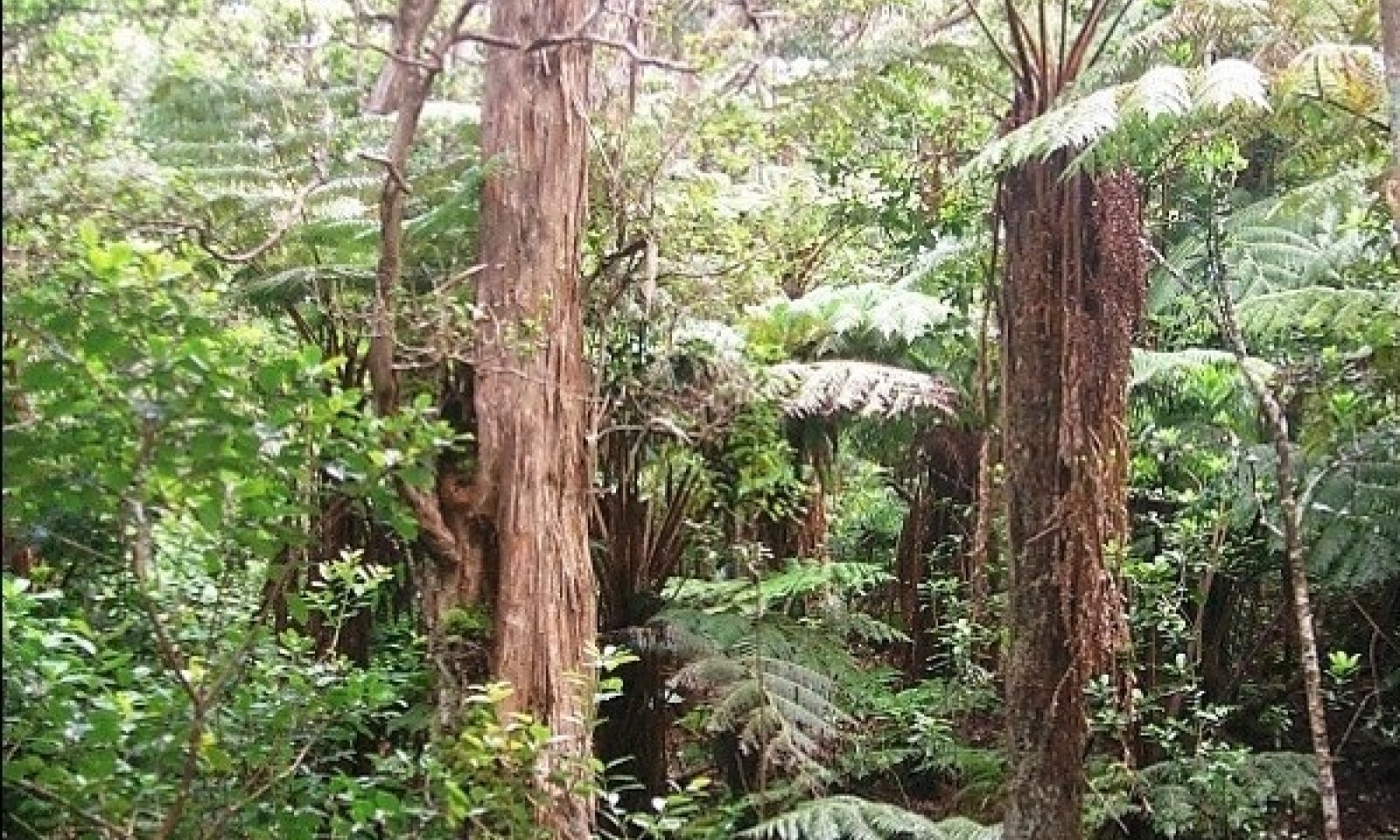

Natural Resources
Conservation Service
Ecological site VX159A01X500
Well Drained Udic and Perudic Forest
Last updated: 4/17/2025
Accessed: 12/21/2025
General information
Provisional. A provisional ecological site description has undergone quality control and quality assurance review. It contains a working state and transition model and enough information to identify the ecological site.
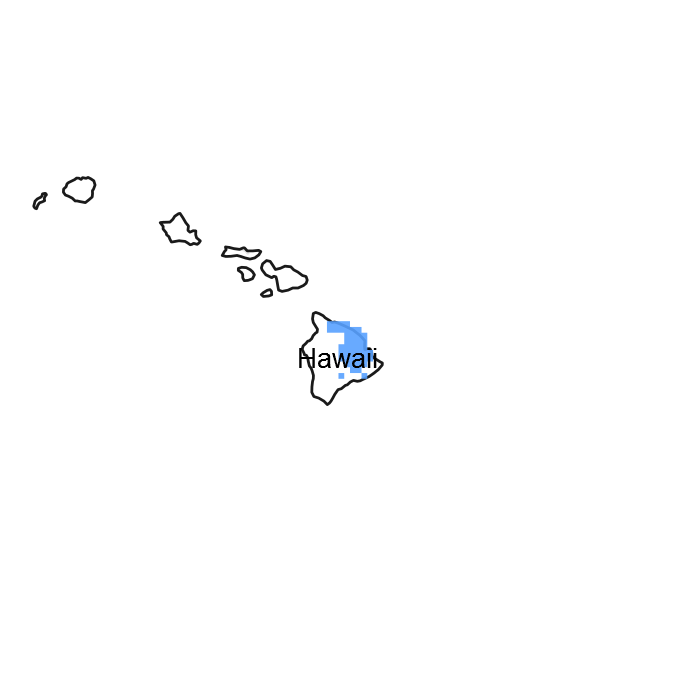
Figure 1. Mapped extent
Areas shown in blue indicate the maximum mapped extent of this ecological site. Other ecological sites likely occur within the highlighted areas. It is also possible for this ecological site to occur outside of highlighted areas if detailed soil survey has not been completed or recently updated.
MLRA notes
Major Land Resource Area (MLRA): 159A–Humid and Very Humid Volcanic Ash Soils on Low and Intermediate Rolling Mountain Slopes
This MLRA occurs in the State of Hawaii on the windward, wetter sides of the islands of Hawaii and Maui. Elevation ranges from near sea level to 6,000 feet (about 2000 meters). Topography is rolling mountain slopes that have been eroded by steep-sided gulches. In most of the area, volcanic ash is underlain by basic igneous rocks, although in some areas volcanic ash was deposited over cinders. Average annual precipitation in most of the area ranges from 120 to 200 inches (3000 to 5000 millimeters); extremes range from 70 inches to 300 inches (1750 to 7500 millimeters). Rainfall is well-distributed throughout the year with an enhanced rainy season from November through April. Average annual air temperatures range from 54 to 73 degrees F (12 to 23 degrees C) with little seasonal variation. The dominant soil order is Andisols with an isothermic or isohyperthermic soil temperature regime and udic or perudic soil moisture regime. Native vegetation consists of medium to tall statured rain forest and open bogs.
Classification relationships
This ecological site occurs within Major Land Resource Area (MLRA) 159A - Humid and Very Humid Volcanic Ash Soils on Low and Intermediate Rolling Mountain Slopes.
Ecological site concept
This extensive ecological site represents the tall-stature, moist forest in the mauka areas of the windward sides of Mauna Kea and Mauna Loa. It exists on private, State, and Federal lands. The continuity is broken mauka of Hilo by younger lava flows from Mauna Kea that have covered the typical deep and very deep volcanic ash soils of the ecological site.
The central concept of this ecological site is of fertile, well drained, deep to very deep Andisols formed in deposits of volcanic ash ranging from 11,000 to 300,000 years old. Annual temperatures and rainfall are associated with warm (isothermic), moist (udic) soil conditions conducive to plant growth for all or most of the year. These sites support tall-stature rain forest consisting of four canopy levels: an overstory up to 100 feet (30 meters) tall of ohia lehua (Metrosideros polymorpha) or ohia lehua and koa (Acacia koa); a secondary canopy from 30 to 60 feet (9 to 18 meters) tall of multiple tree species; a dense tree fern (hapuu = Cibotium spp.) canopy 10 to 30 feet (3 to 9 meters) tall; and a diverse understory of ferns, shrubs, and vines.
Associated sites
| VX159A01X504 |
Moderately Well Drained Perudic Forest At some high elevation, wetter locations, this ecological site is associated with F159AY504 Moderately Well Drained Perudic Forest. The two ecological sites co-occur within some soil map units but on different soils within the map units. F159AY504 has wetter (perudic) soils that produce a more open, shorter canopy that allows enough light to reach the ground for growth of thickets of uluhe fern. |
|---|
Similar sites
| VX161B01X502 |
Kona Weather Udic Forest Kona Weather Udic Forest, F161BY502, occurs above the Kona coast of the Big Island and in a different MLRA. Soils in F161BY502 are generally younger than those in F159AY500. Soils formed in volcanic ash are similar to those in F159AY500; however, F161BY502 contains some organic soils. Rainfall amounts are similar in the two ESs, but annual maxima occur at different times of year. Vegetation and ecological dynamics are similar between the two ESs. |
|---|---|
| VX159B01X500 |
Udic Forest The ecological site Udic Forest occurs above the Kau coast of the Big Island and in a different MLRA. Climate and soils are very similar to F159AY500, resulting in very similar vegetation and ecological dynamics. Rainfall amounts overlap between the two ESs, but F159BY500 is generally drier than F159AY500. |
Table 1. Dominant plant species
| Tree |
(1) Acacia koa |
|---|---|
| Shrub |
(1) Cibotium menziesii |
| Herbaceous |
(1) Freycinetia arborea |
Legacy ID
F159AY500HI
Physiographic features
This ecological site primarily occurs on volcanic ash fields on sloping mountainsides of shield volcanoes. Ash fields range from deep to very deep on the underlying lava.
Table 2. Representative physiographic features
| Landforms |
(1)
Lava flow
(2) Volcano (3) Mountain slope |
|---|---|
| Runoff class | Low to high |
| Flooding frequency | None |
| Ponding frequency | None |
| Elevation | 1,100 – 6,500 ft |
| Slope | 35% |
| Ponding depth |
Not specified |
| Water table depth | 60 in |
| Aspect | NE, E |
Table 3. Representative physiographic features (actual ranges)
| Runoff class | Very low to high |
|---|---|
| Flooding frequency | Not specified |
| Ponding frequency | Not specified |
| Elevation | Not specified |
| Slope | Not specified |
| Ponding depth | Not specified |
| Water table depth | Not specified |
Climatic features
Air temperature in Hawaii is buffered by the surrounding ocean so that the range in temperature through the year is narrow. This creates “iso-“soil temperature regimes in which mean summer and winter temperatures differ by less than 11 degrees F (6 degrees C).
Hawaii lies within the trade wind zone. Significant amounts of moisture are picked up from the ocean by trade winds up to an altitude of more than 6000 feet (very roughly 2000 meters). As the trade winds from the northeast are forced up the mountains of the island their moisture condenses, creating rain on the windward slopes; the leeward side of the island receives little of this moisture. At approximately 6000 feet elevation there is a temperature inversion at the boundary between moist air and higher, drier air. Above the inversion layer, average annual temperatures decrease at a slower rate than below it and average annual precipitation decreases abruptly. Easily observed vegetation changes occur within a short distance at the inversion layer.
On the windward side of the island, cool, moist air at higher elevations descends toward the ocean where it meets the trade winds; this process brings night-time rainfall to lower elevation areas.
In winter, low pressure systems often approach the island from the west, producing extensive rainstorms that primarily affect the leeward sides of the island.
Reference: Giambelluca and Schroeder 1998.
In this ecological site, average annual precipitation ranges from 50 to 140 inches (1250 to 3500 millimeters). Rainfall is well-distributed throughout the year with an enhanced rainy season from November through April, with March being the wettest month. Average annual air temperature ranges from 54 to 71 degrees F (12 to 22 degrees C). In a typical year, temperature and moisture allow plant growth in all seasons.
Table 4. Representative climatic features
| Frost-free period (average) | 365 days |
|---|---|
| Freeze-free period (average) | 365 days |
| Precipitation total (average) | 104 in |
Figure 2. Monthly precipitation range
Figure 3. Monthly average minimum and maximum temperature
Figure 4. Annual precipitation pattern
Figure 5. Annual average temperature pattern
Climate stations used
-
(1) KULANI CAMP 79 [USC00515011], Hilo, HI
-
(2) PAAUILO 221 [USC00517312], Paauilo, HI
Influencing water features
This ecological site contains perennial streams in very deep, steep-sided gulches. The sides and bottoms of these gulches are dominated by alien trees, particularly African tulip tree (Spathodea campanulata), Alexandrian palm (Archontophoenix alexandrae), kukui (Aleurites moluccana), and gunpowder tree (Trema orientalis).
Soil features
Most soils in this ecological site formed in basaltic volcanic ash that varies relatively little in chemical composition (Hazlett and Hyndman 1996; Vitousek 2004). These ash soils are classified as Andisols, which have these general characteristics: ion exchange capacity that varies with pH, but mostly retaining anions such as nitrate; high phosphorus adsorption, which restricts phosphorus availability to plants; excellent physical properties (low bulk density, good friability, weak stickiness, stable soil aggregates) for cultivation, seedling emergence, and plant root growth; resistance to compaction and an ability to recover from compaction following repeated cycles of wetting and drying; and high capacity to hold water that is available to plants. These characteristics are due to the properties of the parent material, the clay-size noncrystalline materials formed by weathering, and the soil organic matter accumulated during soil formation (Shoji et al. 1993).
Considerable soil erosion occurred where there was long-term sugar cultivation; this probably resulted in loss of some soil productive capacity. Reduced growth of same-aged eucalyptus grown on adjoining plots at fence lines between former sugar lands and uncultivated pasture lands provides anecdotal evidence of this.
These Andisols are mostly deep to very deep and present few limitations to the growth of native, exotic, or pasture vegetation regardless of whether the underlying lava rock is pahoehoe or aa.
For ecological and management purposes, all the soils in this ecological site are well drained. However, due to the standards of soil taxonomy, some soils are in other drainage categories. Eheuiki soils are classified as somewhat poorly drained due to a few very thin horizons near the surface. Hao and Puaulu soils are classified as moderately well drained due to a thin gleyed layer near the surface. These horizons do not create adequately wet or anoxic conditions to influence plant growth, plant species presence, or management.
The lava rock fragments that constitute aa range in size from gravel to stones but are primarily gravel and cobbles. Below the layer of rock fragments is massive lava called “bluerock.” The interstices between rock fragments of Andisols formed in aa are filled with soil from the surface to the blue rock. Some Andisols in aa have few or no rock fragments in the upper horizons, while others may have large amounts of rock fragments in all horizons and on the soil surface. These soils may present some tillage difficulties when significant amounts of coarse rock fragments are present near or on the surface.
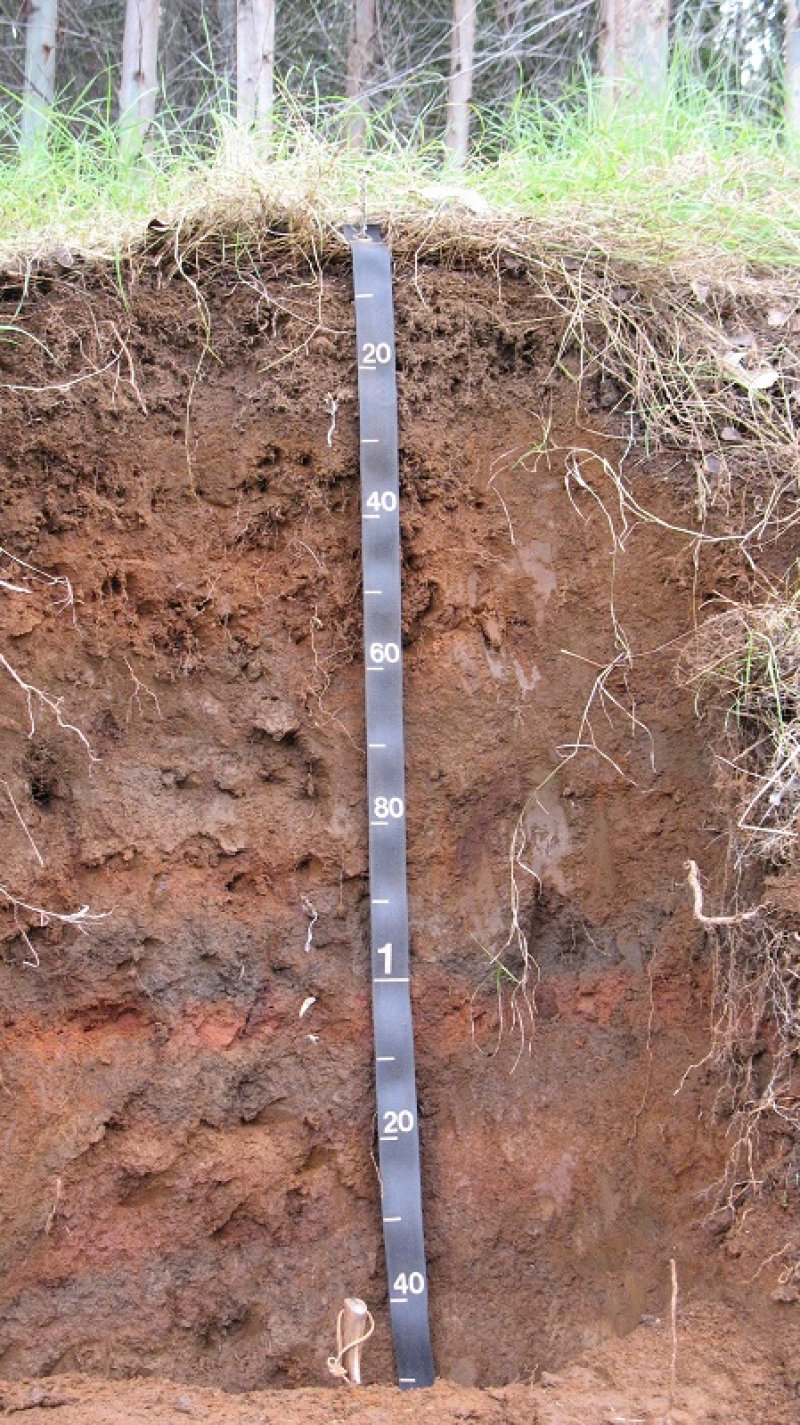
Figure 6. Honokaa soil profile.
Table 5. Representative soil features
| Parent material |
(1)
Basic volcanic ash
–
basalt
|
|---|---|
| Surface texture |
(1) Hydrous silt loam (2) Medial silty clay loam |
| Drainage class | Well drained |
| Permeability class | Slow to rapid |
| Depth to restrictive layer | 10 – 60 in |
| Soil depth | 10 – 60 in |
| Surface fragment cover <=3" | 2 – 5% |
| Surface fragment cover >3" | 2 – 25% |
| Available water capacity (0-40in) |
5 – 13 in |
| Calcium carbonate equivalent (0-40in) |
Not specified |
| Electrical conductivity (0-40in) |
2 mmhos/cm |
| Sodium adsorption ratio (0-40in) |
Not specified |
| Soil reaction (1:1 water) (0-20in) |
4.4 – 6 |
| Subsurface fragment volume <=3" (0-60in) |
5 – 70% |
| Subsurface fragment volume >3" (0-60in) |
2 – 50% |
Table 6. Representative soil features (actual values)
| Drainage class | Not specified |
|---|---|
| Permeability class | Not specified |
| Depth to restrictive layer | Not specified |
| Soil depth | Not specified |
| Surface fragment cover <=3" | 25% |
| Surface fragment cover >3" | 2 – 40% |
| Available water capacity (0-40in) |
Not specified |
| Calcium carbonate equivalent (0-40in) |
Not specified |
| Electrical conductivity (0-40in) |
Not specified |
| Sodium adsorption ratio (0-40in) |
Not specified |
| Soil reaction (1:1 water) (0-20in) |
3.9 – 7.3 |
| Subsurface fragment volume <=3" (0-60in) |
2 – 95% |
| Subsurface fragment volume >3" (0-60in) |
2 – 80% |
Ecological dynamics
The information in this ecological site description (ESD), including the state-and-transition model (STM), was developed using archaeological and historical data, professional experience, and scientific studies. The information is representative of a complex set of plant communities. Not all scenarios or plants are included. Key indicator plants, animals, and ecological processes are described to inform land management decisions.
States and community phases within this ecological site were differentiated by inspection of data; ordination programs were not available. They were verified by professional consensus and observation of examples in the field.
Natural Disturbances
The natural (not human-caused) disturbances most important for discussion in this ecological site are lava flows, natural fires, volcanic ash falls, and wind throw.
A lava flow obviously destroys all the vegetation it covers. Regrowth of vegetation through primary succession and formation of new soil proceed at widely varying rates depending on flow age, local climate, lava type (aa or pahoehoe), and proximity of vegetation seed sources. Flows located in warm, moist climates are rapidly colonized by the nitrogen-fixing lichen Stereocaulon vulcani, followed soon by vascular plants including ohia lehua trees. In these environments, considerable vegetation can be established in periods measured in decades. Cooler locations at higher elevations revegetate more slowly. Cobbly aa lava provides safe sites for seed germination as well as sites that promote plant rooting and soil accumulation in the gaps between cobbles. This is a more favorable situation for revegetation and soil development than flat, bare pahoehoe lava. Where lava flows are narrow or where kipukas (“islands” of surfaces not covered by lava) occur, revegetation is hastened by the proximity of seed sources from intact vegetation stands nearby.
It has been estimated that about 40% of the surface of Mauna Loa has been covered by lava in the past 1,000 years (Wagner et al. 1999). On the northeastern slopes of Mauna Loa, near Saddle Road west of Hilo, are lava flows that occurred within the past several centuries. The vegetation on these young flows still shows the effects of burial by lava and subsequent recovery via primary succession. However, the degree of recovery varies due to the factors discussed in the previous paragraph. Many of these sites currently exhibit less-developed soils and vegetation communities that currently fall within the outer ranges of the concept of this ecological site.
Heat from nearby lava flows sears and kills vegetation and can ignite wildfires that may carry to some extent. These effects can be seen in vegetation growing near the edges of recent flows. However, natural wildfire caused by lava or by lightning is probably not a widespread disturbance in this ecological site. Large parts of the Hamakua uplands were burned by wildfires in the early 20th century, but these fires likely were caused by humans and spread via introduced grass species.
Vegetation can be killed by erupted layers of ash from volcanic vents, depending on the temperature of the ash and the depth of accumulation. However, vegetation sometimes survives ash flows (Vitousek 2004). Vegetation rapidly recovers because ash flow deposits possess physical and chemical properties favorable to plant growth, including high water holding capacity, high surface area, rapid weathering, and favorable mineral nutrient content. New soils develop very rapidly in ash deposits, and further soil development is facilitated in turn by the rapidly-developing vegetation (Shoji et al. 1993). The ash accumulations in this ecological site are currently so old that there are no visible effects due to ash fall at the present time.
Most of the surfaces of Mauna Kea within this ecological site range from tens of thousands to hundreds of thousands of years old, with small areas having been covered by fresh lava in the past 11,000 years. All of these Mauna Kea flows are covered with volcanic ash. Vegetation and soils on these flows have recovered to a point at which they fit comfortably within the central concept of the ecological site.
Wind throw of vegetation can occur during hurricanes or other high wind events. As the soils of this ecological site are deep to very deep, wind throw may not be as important here as in some other ecological sites.
Human Disturbances
Human-related disturbances have been much more important than natural disturbances in this ecological site since the arrival of Polynesians and, later, Europeans. This is reflected in the State and Transition Model Diagram.
Humans arrived in the Hawaiian Islands 1200 to 1500 years ago. Their population gradually increased so that by 1600 AD at least 80% of all the lands in Hawaii below about 1500 feet (roughly 500 meters) in elevation had been extensively altered by humans (Kirch 1982); some pollen core data suggest that up to 100% of lowlands may have been altered (Athens 1997). By the time of European contact late in the 18th century, the Polynesians had developed high population densities and placed extensive areas under intensive agriculture (Cuddihy and Stone 1990).
Prehistoric native lowland forest disturbance can be attributed to clearing for agriculture by hand or by fire, introduction of new plants and animals, and wood harvesting. Higher elevation forests would have been much less affected, but may have been affected by factors such as inadvertently introduced plant diseases and seed predation by the introduced Pacific rat (Athens 1997).
After the arrival of Europeans, documentary evidence attests to accelerated and extensive deforestation, erosion, siltation, and changes in local weather patterns (Kirch 1983) due to more intensive land use, modern tools, and introduction of more plant, animal, and microbe species.
The Polynesians introduced dogs, Pacific rats, and small pigs to the islands. Cattle, sheep, horses, goats, and larger European pigs were introduced in the final decades of the 18th century. These animals ranged free on the islands, becoming very numerous and destructive by the early decades of the 19th century. Additionally, packs of feral dogs had become established, as confirmed by reports of their depredations on sheep. By 1851, records reported severe overstocking of pastures, lack of fences, and large numbers of feral livestock (Henke 1929).
Native forests were damaged by the extensive harvesting of tree ferns (hapuu) for pulu in the mid-1800s. Pulu is a soft fiber that covers the base of fronds of the hapuu. It was exported to the west coast of America to be used in pillows and mattresses. Today, some forest sites in this ecological site still lack tree ferns due to pulu harvesting.
By the early 20th century, concerns over watershed conditions due to destruction of forests led to establishment of forest reserves and efforts to replant forests. Introduced tree species were often planted because they were considered to be hardier or more valuable than native species. The introduced tree species christmasberry or Brazilian peppertree (Schinus terebinthifolius) was selected for planting in Hawaii because it is apparently worthless; the reasoning was that no one would be tempted to cut down a worthless tree. Seeds of introduced species were often sown in the mountains by airplanes (Little and Skolmen 1989). Some of these species have proven to be highly invasive. In addition to direct competitive effects, exotic trees (e.g., tropical ash or shamel ash (Fraxinus uhdei) and nitrogen-fixing species such as faya tree or fire tree (Morella faya; syn. Myrica faya) and albizia or peacocks plume (Falcataria moluccana) produce litter that is very different in chemical composition or physical form from native plant litter, bringing about changes in nutrient cycling and physical conditions in soils and on the forest floor (Vitousek 2004).
Large parts of this ecological site were cleared for sugar plantations in the 19th century; these plantations were active into the late 20th century. Plantation activities caused extensive soil erosion. Anecdotal evidence of the loss of fertile upper soil horizons is provided by eucalyptus plantations where trees were planted at the same time on former sugar plantation lands and adjoining ranch lands separated from each other by fences. Same-aged trees are much larger on the less-eroded ranch side of the fence.
Forests at the upper boundaries of sugar plantations were affected by harvesting of firewood and intrusion of wildfires from the sugar lands into the forest.
With abandonment of the sugar plantations, guineagrass (Urochloa maxima), which had been a roadside weed in the plantations, rapidly spread through the fields. Guineagrass is a tall, densely-growing, and highly competitive species that also provides excellent forage for cattle, and it facilitated the transition of former sugar lands to grazing lands.
Through the 20th and into the 21st centuries, increases in human populations with attendant land development, as well as accelerated introduction of non-native mammals, birds, reptiles, amphibians, invertebrates, plants, and microorganisms, have brought about dramatic changes to wild ecosystems in Hawaii. This ecological site evolved without the presence of large mammals or the regular occurrence of fires. Much of the original forest area remains. However, the native plant community in many areas has been highly disturbed and in some places destroyed due to agriculture, urban development, establishment of exotic timber trees, domestic and feral ungulate foraging, and invasion by introduced species. Introduced plant species are capable of completely and permanently replacing native forest.
Foraging by feral cattle and pigs or forest clearing and abandonment facilitate invasion by weeds. However, introduced weeds appear able to successfully invade native stands regardless of human or ungulate disturbances. Among the major weeds are strawberry guava or waiawi (Psidium cattleianum), faya tree (Morella faya), Koster’s curse or soapbush (Clidemia hirta), Asian melastome (Melastoma candida), christmasberry or Brazilian peppertree (Schinus terebinthifolius), kahili ginger or Kahila garland-lily (Hedychium gardnerianum), and introduced grasses. Guineagrass (Urochloa maxima) and kikuyugrass (Pennisetum clandestinum) grasslands become infested with unpalatable grasses, shrubs, and trees under improper management or abandonment.
State and transition model
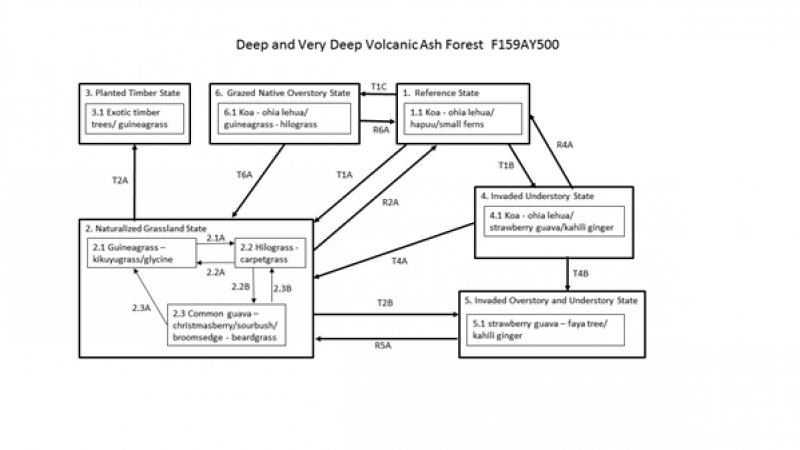
Figure 7. STM for F159AY500
More interactive model formats are also available.
View Interactive Models
More interactive model formats are also available.
View Interactive Models
Click on state and transition labels to scroll to the respective text
Ecosystem states
States 1, 6, 2 and 5 (additional transitions)
States 2 and 6 (additional transitions)
State 1 submodel, plant communities
State 2 submodel, plant communities
State 3 submodel, plant communities
State 4 submodel, plant communities
State 5 submodel, plant communities
State 6 submodel, plant communities
State 1
Reference State
The Reference State consists of one plant community. Under a regime of natural disturbances, this community has probably been stable through post-glacial time frames and from a broad-scale spatial perspective. A matrix of variations in canopy cover and species composition in all canopy levels is observable. This matrix variability does not appear to be connected to soils, climate, or landscape features, but rather is probably due to wind throw, deaths of large trees, and other chance occurrences. State 1 will transition into State 2, Grassland State, by either active clearing by humans or by heavy foraging over time by feral ungulates. It can transition into State 4, Invaded Understory State, by gradual weed invasion, which is exacerbated by feral ungulates.
Community 1.1
Koa - `ohi`a lehua/hapu`u/small ferns

Figure 8. Reference Community Phase 12/06/08 D Clausnitzer MU956
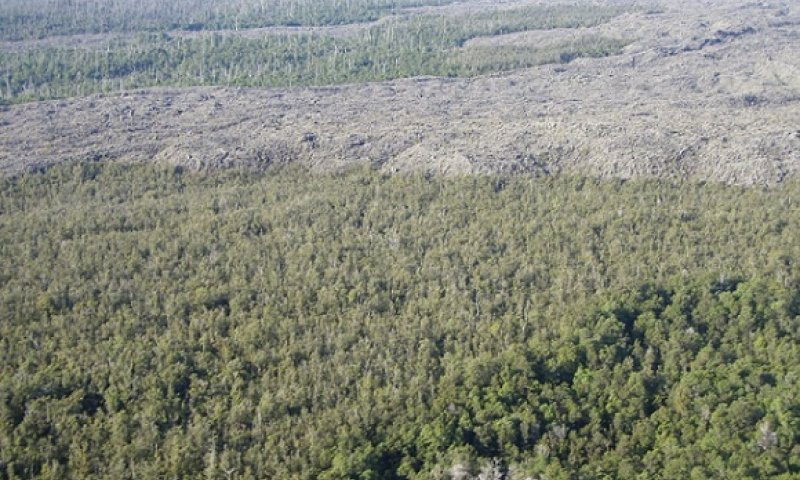
Figure 9. Aerial view with recent lava flow 9/15/08 D Clausnitzer
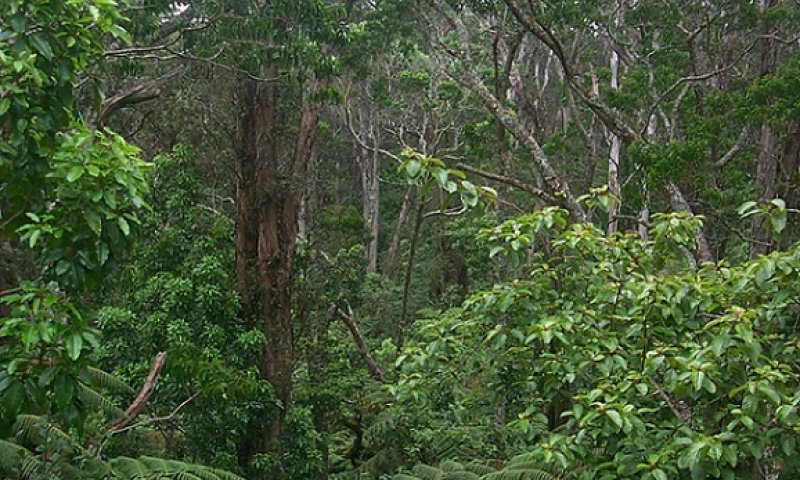
Figure 10. View of the two upper strata 3/27/07 D Clausnitzer MU851
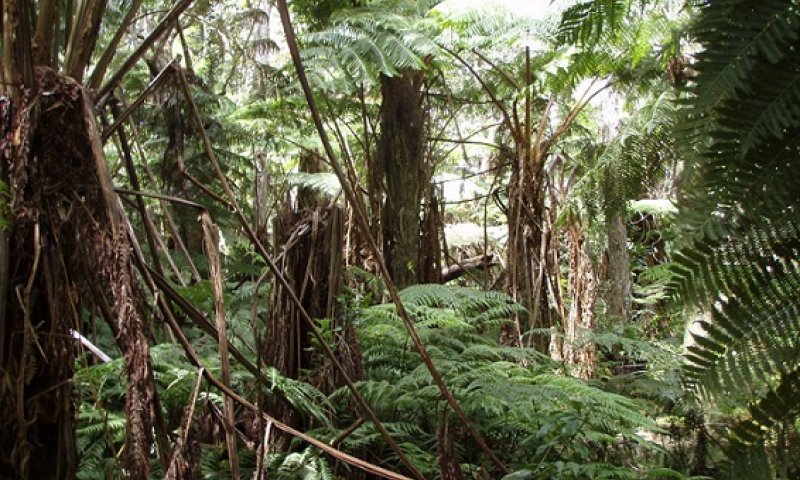
Figure 11. Within the tree fern stratum D Clausnitzer generic photo
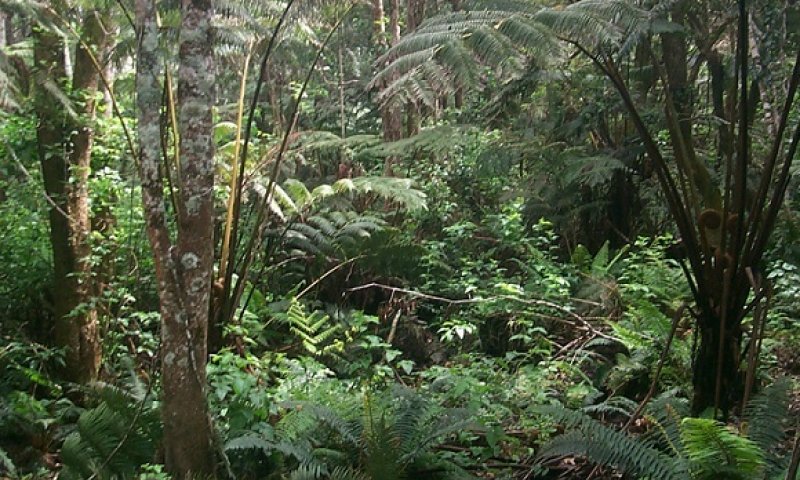
Figure 12. The lowest stratum 3/27/07 D Clausnitzer MU851
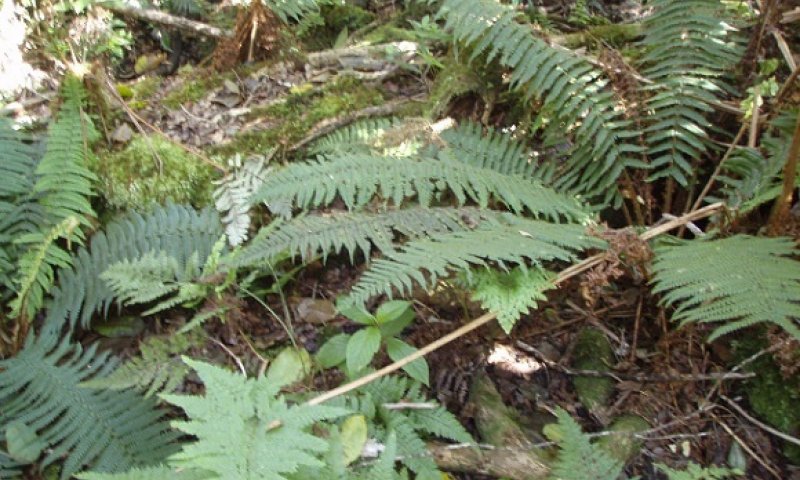
Figure 13. The forest floor 1/5/10 D Clausnitzer generic photo
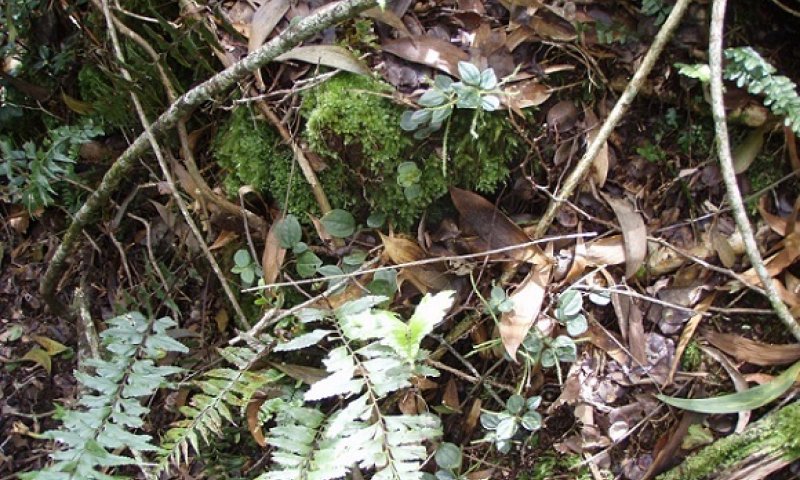
Figure 14. Forest floor close-up 9/14/09 D Clausnitzer generic photo
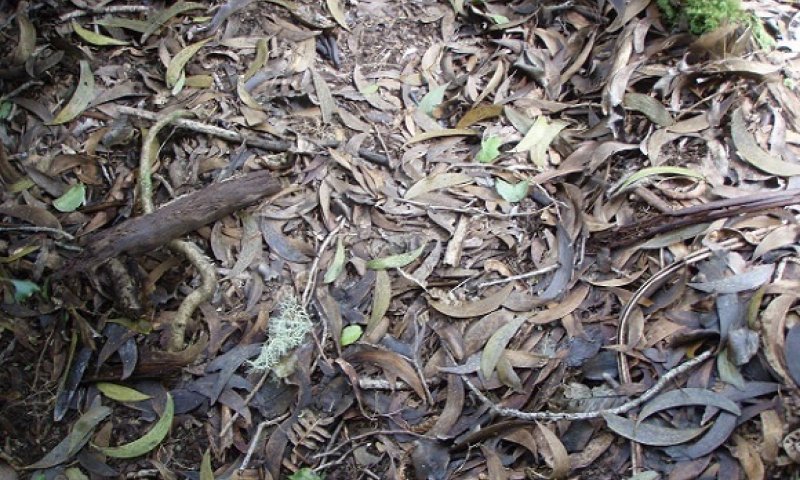
Figure 15. Heavy koa phyllode litter, Humuula Trail 9/14/09 D Clausnitzer generic photo
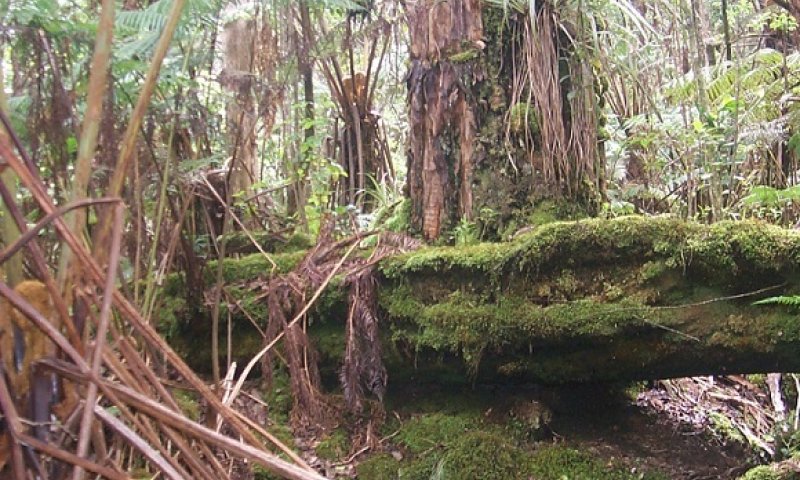
Figure 16. Downed tree 3/27/07 D Clausnitzer MU851
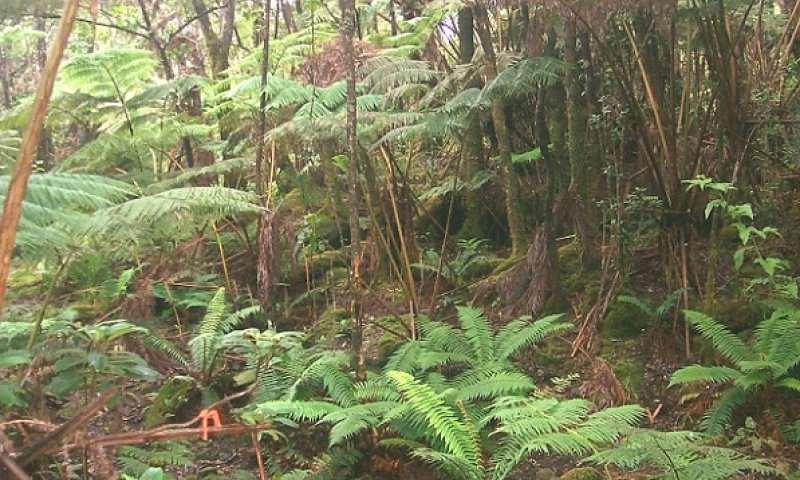
Figure 17. Young lava flow vegetation D Clausnitzer generic photo
This community phase is a forest consisting of four canopy strata: an open or closed upper canopy of ohia lehua or ohia lehua and koa up to 100 feet (30 meters) tall, a secondary canopy of diverse tree species 30 to 60 feet (9 to 18 meters) tall, a dense tree fern canopy 10 to 30 feet (3 to 9 meters) tall, and a diverse understory of shrubs and ferns. Vines are common both on the ground and on trees. All three Big Island tree fern species are present. These forests have standing live timber of 800 to 5700 cubic feet per acre, with a representative value of about 3000 cubic feet per acre. Typical low values are about 1500 cubic feet per acre. Canopy cover of ohia lehua and koa in the upper canopy varies on the microscale from about 10% to 80%, with a representative value of 40 to 50% on a macroscale. Secondary canopy cover of medium-stature tree species is typically about 20%, concentrated in the 30 to 40 feet (9 to 12 meters) height range. Cover of the tertiary tree fern canopy is usually in the range of 60% to 90%, mostly between 13 to 25 feet (4 to 8 meters) tall. Koa and ohia lehua do not reproduce successfully in the shady understory of intact forest. Tree ferns, medium-stature tree species, and shrubs reproduce and grow well in the understory. The ground layer of small ferns is typically dense and diverse in the absence of introduced ungulates. A heavy litter layer that appears to inhibit establishment of small plants is usually present on the soil surface. In particular, dead tree fern fronds produce a coarse, thick, heavy litter layer. Koa phyllodes create a firm, continuous litter layer. Phyllodes are petioles (leaf stalks) that are adapted to function as leaves on mature koa trees. At forest edges near recent lava flows or in small kipukas, the plant communities have been seared by heat and, in some cases, burned by wildfires ignited by hot lava. Species richness and plant statures vary considerably in these locations. It is even possible to find two clear variations of the Reference Community present within one small kipuka. In general, these areas contain ohia lehua without koa, a sparse understory of kopiko, hapuu, small native ferns, and a scattering of other tree, shrub, and vine species. Plant statures across the board are smaller than those found in mature forest. Soils fall within the range of the soil series concept but may differ somewhat from the type location description.
Forest overstory. The uppermost forest canopy consists of ohia lehua or a combination of ohia lehua and koa. There seems to be no consistent relationship between dominant tree canopy composition and soil type, rainfall, elevation, or any other environmental variable. Neither overstory species grows well in shade. Primary succession in Hawaii typically results in an initial forest overstory of ohia lehua, often consisting of roughly even-aged cohorts. It is likely that long-term disturbance history controls koa occurrence. Koa is a fast growing, opportunistic species that is able to take advantage of temporary openings in the forest canopy. Wind fall, nearby lava flows, or death of ohia lehua population cohorts would provide the conditions for koa expansion where their seeds are present. Koa also can reproduce by sprouting from near-surface roots.
Forest understory. The secondary canopy contains about 15 tree species, the most common of which are kopiko or wild coffee (Psychotria spp.), hame (Antidesma spp.), olapa or olapalapa (Cheirodendron trigynum), kolea lau nui (Myrsine lessertiana), and pilo or woodland mirrorplant (Coprosma rhynchocarpa). The palm native to this ecological site, loulu or louulu (Pritchardia lanigera), is rare but may have been more abundant in the past.
The tertiary canopy is dominated by three species of hapuu or tree ferns: hapuu (Cibotium glaucum), hapuu ii or hapuu li (Cibotium menziesii), and hapuu or Chamisso’s manfern (Cibotium chamissoi). Cibotium glaucum is the most abundant, followed by C. menziesii; C. chamissoi is the least abundant. This canopy contains about 25 species of small trees.
The lowest canopy stratum, which ranges in height from the ground to about 4.5 feet (1.5 meters), consists of seedlings and immature individuals of species in the taller strata, about 8 small shrub species, about 11 forb species, about 5 vines (some prostrate, some climbing, some both), 3 common sedges, and over 30 species of ferns and fern allies.
Table 7. Soil surface cover
| Tree basal cover | 3-6% |
|---|---|
| Shrub/vine/liana basal cover | 1-3% |
| Grass/grasslike basal cover | 0-1% |
| Forb basal cover | 0.1-1.0% |
| Non-vascular plants | 5-10% |
| Biological crusts | 0% |
| Litter | 60-80% |
| Surface fragments >0.25" and <=3" | 0-1% |
| Surface fragments >3" | 0-1% |
| Bedrock | 0% |
| Water | 0% |
| Bare ground | 0% |
Table 8. Woody ground cover
| Downed wood, fine-small (<0.40" diameter; 1-hour fuels) | – |
|---|---|
| Downed wood, fine-medium (0.40-0.99" diameter; 10-hour fuels) | – |
| Downed wood, fine-large (1.00-2.99" diameter; 100-hour fuels) | – |
| Downed wood, coarse-small (3.00-8.99" diameter; 1,000-hour fuels) | 1-3% |
| Downed wood, coarse-large (>9.00" diameter; 10,000-hour fuels) | 1-3% |
| Tree snags** (hard***) | – |
| Tree snags** (soft***) | – |
| Tree snag count** (hard***) | 0-1 per acre |
| Tree snag count** (hard***) | 0-1 per acre |
* Decomposition Classes: N - no or little integration with the soil surface; I - partial to nearly full integration with the soil surface.
** >10.16cm diameter at 1.3716m above ground and >1.8288m height--if less diameter OR height use applicable down wood type; for pinyon and juniper, use 0.3048m above ground.
*** Hard - tree is dead with most or all of bark intact; Soft - most of bark has sloughed off.
Table 9. Canopy structure (% cover)
| Height Above Ground (ft) | Tree | Shrub/Vine | Grass/ Grasslike |
Forb |
|---|---|---|---|---|
| <0.5 | 0% | 0% | 0% | 0% |
| >0.5 <= 1 | 0-1% | 0-1% | 0% | 0% |
| >1 <= 2 | 0-1% | 1-5% | 0-1% | 0-1% |
| >2 <= 4.5 | 0-1% | 1-5% | – | – |
| >4.5 <= 13 | 3-10% | 5-10% | – | – |
| >13 <= 40 | 60-90% | 1-1% | – | – |
| >40 <= 80 | 20-80% | – | – | – |
| >80 <= 120 | 0-1% | – | – | – |
| >120 | – | – | – | – |
State 2
Naturalized Grassland State
The elevation range of the forest found in the Reference State does not coincide perfectly with the elevation range of the dominant grass species within the Grassland State. In some areas at the higher elevation range of this ecological site, kikuyugrass (Pennisetum clandestinum) replaces guineagrass as the dominant species. More detailed information, including forage production estimates, about these kikuyugrass grasslands can be found in Ecological Site Description F160XY502 Isomesic-Cool Isothermic Forest. This state consists of three grassland community phases. These phases are maintained by grazing, which keeps preferred species from becoming too tall, and adequate recovery periods, which ensure vigor and cover of preferred species. High production of preferred grass species and extensive cover allow for increased soil moisture retention, vegetative production, and overall soil quality. These factors are degraded by grazing practices that result in loss of preferred grass species leading to increase in less desirable grasses, weed invasion, and an increase in the extent of bare soil. Prescribed burning generally is not allowed due to high risks to structures, fences, and native forest stands. Wildfires caused by lightning or arson sometimes occur. They are very intense and difficult to contain, because guineagrass produces huge amounts of fuel and grows to a height of almost 10 feet (3 meters), while kikuyugrass produces large amounts of fuel and has rhizomes that can smolder underground for days, sometimes reigniting a surface fire. Most of the grasslands in this ecological site are on former sugar plantations where guineagrass (Urochloa maxima) was a species of roadsides and waste areas (Earl Spence, rancher and manager, personal communication). Guinea grass now has taken over these lands as the dominant forage grass. All grass, sedge, forb, vine, shrub, and tree species found in this state have been introduced to Hawaii by humans within the past two centuries, either inadvertently or intentionally. Scattered, remnant native trees, either koa or ohia lehua, sometimes occur in these naturalized grasslands, but they are unable to reproduce without protection from ungulates and control of grasses and weeds. Occasionally, western brackenfern (Pteridium aquilinum) and uluhe or Old World forkedfern (Dicranopteris linearis) occur; both of these fern species are native to Hawaii. Community Phase 2.1 mostly consists of guineagrass, sometimes with an admixture of glycine or perennial soybean (Neonotonia wightii). Continuous grazing that does not allow the preferred forage species to recover from defoliation results in Community Phase 2.2, which is dominated by lower value grass species but contains enough remnant guineagrass to allow for a shift back to Plant Community 1 with prescribed grazing. Longer-term continuous grazing leads to Community Phase 2.3, which consists of low value grass species and increasing cover of alien shrubs and tree saplings. Improvement of this Plant Community requires weed control followed by prescribed grazing.
Community 2.1
Guineagrass - kikuyugrass/glycine
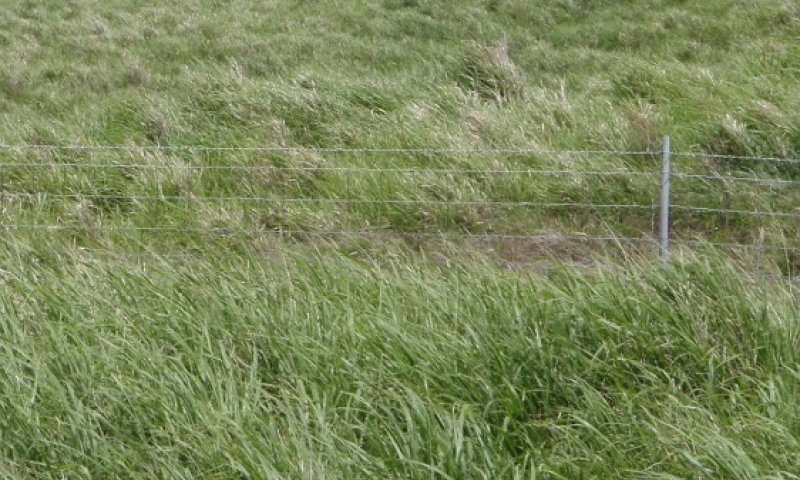
Figure 18. Good condition guineagrass D Clausnitzer generic photo
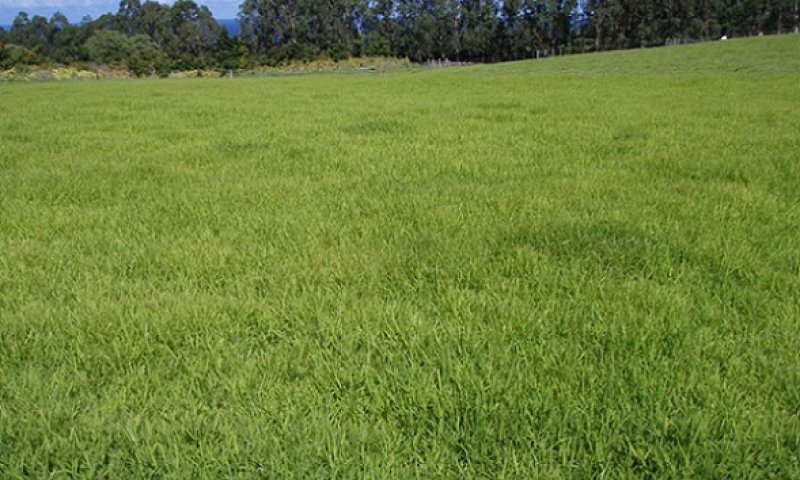
Figure 19. Well-managed hilograss pasture Chinchuk Road 5/28/08 D Clausnitzer generic photo
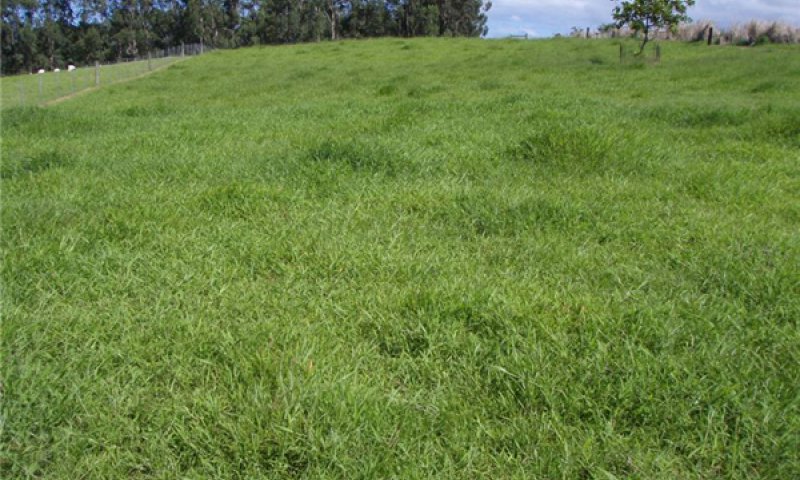
Figure 20. Signalgrass pasture Chinchuk Road 5/28/08 D Clausnitzer generic photo
The dominant grass species in this pasture type is guineagrass that has volunteered or been seeded on old sugarcane plantations. In some higher elevation areas, kikuyugrass was planted and became naturalized. Kikuyugrass spreads mostly by rhizomes and stolons. For further information about kikuyugrass production and management, please refer to Ecological Site Description F160XY502 Isomesic-Cool Isothermic Forest. Guinea grass is very productive and nutritious for livestock. Careful management of this caespitose (bunch-forming) grass is required to maintain it at an efficient height (two to four feet) while maintaining sufficient ground coverage by leaves, litter, and grass clumps to protect the soil from erosion and to suppress weed growth.
Forest understory. Guinea grass is very competitive with other plants when properly managed and can comprise 85 to nearly 100% of the total production on a site. Forbs, shrubs, tree seedlings, and other grass species can occur in the interspaces between guineagrass bunches but are insignificant in their share of total production in well-managed sites. They are kept in check by competition with guinea grass and foraging and trampling by livestock. Perennial soybean or glycine (Neonotonia wightii), a competitive (and potentially weedy in forests), climbing legume vine, and three-flowered ticktrefoil (Desmodium triflorum), a prostrate legume, are desirable forage species that can be maintained within guinea grass stands by careful grazing management.
Figure 21. Annual production by plant type (representative values) or group (midpoint values)
Table 10. Ground cover
| Tree foliar cover | 0-5% |
|---|---|
| Shrub/vine/liana foliar cover | 1-3% |
| Grass/grasslike foliar cover | 80-90% |
| Forb foliar cover | 1-2% |
| Non-vascular plants | 0% |
| Biological crusts | 0% |
| Litter | 25-35% |
| Surface fragments >0.25" and <=3" | 0.1-1.0% |
| Surface fragments >3" | 0.1-1.0% |
| Bedrock | 0% |
| Water | 0% |
| Bare ground | 1-5% |
Table 11. Canopy structure (% cover)
| Height Above Ground (ft) | Tree | Shrub/Vine | Grass/ Grasslike |
Forb |
|---|---|---|---|---|
| <0.5 | – | 0% | 0% | 0-1% |
| >0.5 <= 1 | – | 0-1% | 0% | 1-2% |
| >1 <= 2 | – | 0-1% | 1-5% | 1-2% |
| >2 <= 4.5 | – | 1-2% | 85-90% | 1-2% |
| >4.5 <= 13 | – | – | 1-5% | – |
| >13 <= 40 | – | – | – | – |
| >40 <= 80 | 0-10% | – | – | – |
| >80 <= 120 | – | – | – | – |
| >120 | – | – | – | – |
Community 2.2
Hilograss - carpetgrass
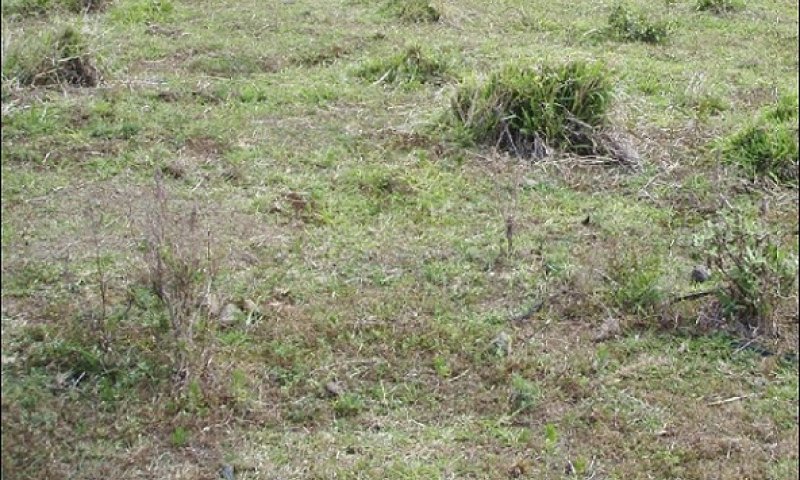
Figure 22. Overgrazed guineagrass with shorter species D Clausnitzer generic photo
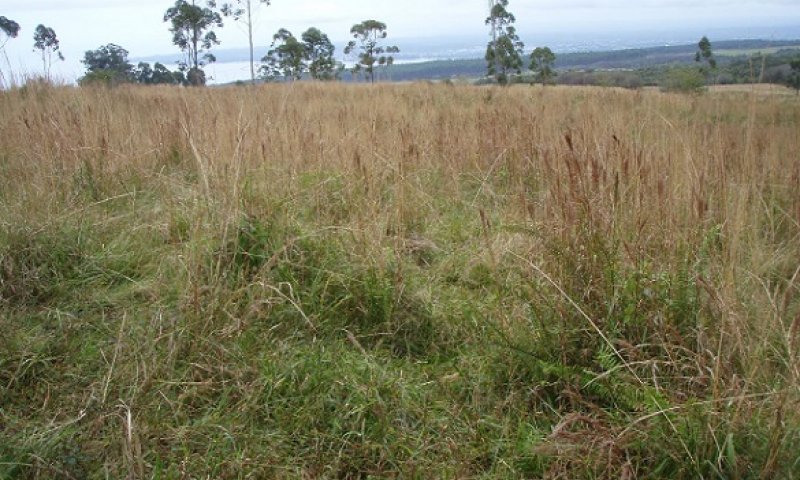
Figure 23. Invaded by Andropogon virginicus, Kaiwiki soil D Clausnitzer generic photo
This community phase is dominated by grass and grasslike species with lower forage value than guineagrass. Cattle can be maintained on these forages, but animal growth and vigor will be reduced. Also, the number of weedy species is high, and their stature, seed production potential, and wide distribution can lead to rapid increase and a shift to Community Phase 2.3 unless management is improved.
Forest understory. The most abundant grasses are hilograss (Paspalum conjugatum), common carpetgrass (Axonopus fissifolius), and shortleaf spikesedge (Kyllinga brevifolia), all of which have lower stature and are much less productive than guineagrass. Significant amounts (around 20% canopy cover) of guineagrass remain, but it is grazed low and is scattered across the site. Desirable forage legumes have been grazed out. Height of weedy trees, shrubs, ferns, vines, and forbs is low, and the combined cover of all these species is about 5 to 20%.
Table 12. Soil surface cover
| Tree basal cover | 0.0-0.1% |
|---|---|
| Shrub/vine/liana basal cover | 0.0-0.1% |
| Grass/grasslike basal cover | 30-50% |
| Forb basal cover | 0.1-1.0% |
| Non-vascular plants | 0.1-1.0% |
| Biological crusts | 0% |
| Litter | 40-60% |
| Surface fragments >0.25" and <=3" | 0% |
| Surface fragments >3" | 0% |
| Bedrock | 0% |
| Water | 0% |
| Bare ground | 5-10% |
Table 13. Woody ground cover
| Downed wood, fine-small (<0.40" diameter; 1-hour fuels) | 0-0% |
|---|---|
| Downed wood, fine-medium (0.40-0.99" diameter; 10-hour fuels) | 0-0% |
| Downed wood, fine-large (1.00-2.99" diameter; 100-hour fuels) | – |
| Downed wood, coarse-small (3.00-8.99" diameter; 1,000-hour fuels) | – |
| Downed wood, coarse-large (>9.00" diameter; 10,000-hour fuels) | – |
| Tree snags** (hard***) | – |
| Tree snags** (soft***) | – |
| Tree snag count** (hard***) | |
| Tree snag count** (hard***) |
* Decomposition Classes: N - no or little integration with the soil surface; I - partial to nearly full integration with the soil surface.
** >10.16cm diameter at 1.3716m above ground and >1.8288m height--if less diameter OR height use applicable down wood type; for pinyon and juniper, use 0.3048m above ground.
*** Hard - tree is dead with most or all of bark intact; Soft - most of bark has sloughed off.
Table 14. Canopy structure (% cover)
| Height Above Ground (ft) | Tree | Shrub/Vine | Grass/ Grasslike |
Forb |
|---|---|---|---|---|
| <0.5 | 0% | 0-1% | 10-20% | 0-1% |
| >0.5 <= 1 | 0% | 0-1% | 10-20% | 1-5% |
| >1 <= 2 | 0% | 0-1% | 40-50% | 1-5% |
| >2 <= 4.5 | 0-1% | 0-1% | 10-20% | 0-1% |
| >4.5 <= 13 | – | – | – | – |
| >13 <= 40 | – | – | – | – |
| >40 <= 80 | – | – | – | – |
| >80 <= 120 | – | – | – | – |
| >120 | – | – | – | – |
Community 2.3
Common guava - christmasberry/sourbush/broomsedge - beardgrass
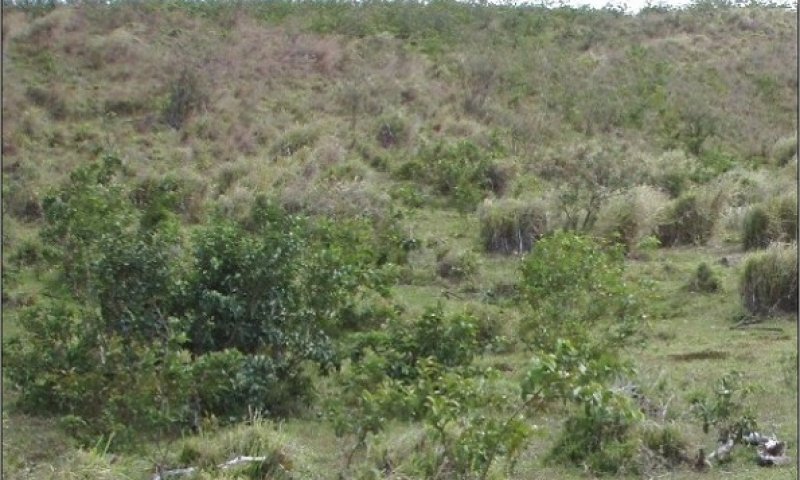
Figure 24. Overgrazed grassland with common guava D Clausnitzer generic photo
This community phase is dominated by grass species with little or no forage value. Guineagrass typically comprises a small portion (roughly 5% canopy cover) of the grasses present, but sometimes is more abundant but of low stature. Spiny forbs and vines are common, as are a large number of forb and fern species with little or no forage value. Introduced shrubs and small trees are common, and seedlings and saplings of large, introduced tree species are present. Bare soil is 10% or more of the ground surface. The abundance of immature naturalized trees with potential mature heights of 20 to over 100 feet (6 to over 30 meters) presents a strong risk of losing the grassland to weedy forest. Improving the grazing regime is extremely unlikely to shift this phase to a more productive grassland phase due to the abundance of weeds. Frequent mowing is not worthwhile; it will keep shrubs and trees in check but will do little to improve the grass and forb community. Herbicide treatments are needed to reduce weed abundance. Reseeding of guineagrass may be needed, along with removal of livestock until guineagrass has reassumed dominance.
Forest understory. Hilograss, common carpetgrass, broomsedge bluestem (Andropogon virginicum), and beardgrass or Colombian bluestem (Schizachyrium condensatum) are the most abundant grasses. Sawtooth blackberry (Rubus argutus) and West Indian raspberry or thimbleberry (Rubus rosifolius) form small thickets. Shrubs such as sourbush or cure for all (Pluchea carolinensis) and lantana (Lantana camara), along with small trees such as common guava (Psidium guajava), christmasberry or Brazilian peppertree (Schinus terebinthifolius), and fayatree or firetree (Morella faya) have combined canopy cover of about 20% and heights of 2 to 4.5 feet (0.5 to 1.5 meters). Seedlings and saplings of large tree species such as octopus tree (Schefflera actinophylla) and albizia or peacocksplume (Falcataria moluccana) are often present.
Table 15. Soil surface cover
| Tree basal cover | 0.0-0.1% |
|---|---|
| Shrub/vine/liana basal cover | 0.1-1.0% |
| Grass/grasslike basal cover | 30-40% |
| Forb basal cover | 0.1-1.0% |
| Non-vascular plants | 0.0-0.1% |
| Biological crusts | 0% |
| Litter | 40-50% |
| Surface fragments >0.25" and <=3" | 0% |
| Surface fragments >3" | 0% |
| Bedrock | 0% |
| Water | 0% |
| Bare ground | 10-20% |
Table 16. Canopy structure (% cover)
| Height Above Ground (ft) | Tree | Shrub/Vine | Grass/ Grasslike |
Forb |
|---|---|---|---|---|
| <0.5 | 0% | 0% | 10-20% | 1-2% |
| >0.5 <= 1 | 0% | 0-1% | 10-20% | 1-2% |
| >1 <= 2 | 0% | 0-1% | 20-30% | 1-2% |
| >2 <= 4.5 | 0-1% | 5-10% | 20-30% | 3-5% |
| >4.5 <= 13 | 5-10% | 1-2% | – | 0-1% |
| >13 <= 40 | – | – | – | – |
| >40 <= 80 | – | – | – | – |
| >80 <= 120 | – | – | – | – |
| >120 | – | – | – | – |
Pathway 2.1A
Community 2.1 to 2.2


Plant Community 2.1 degrades to Plant Community 2.2 by continuous grazing that weakens preferred grass species and legumes in relation to less-preferred forage species such as Hilograss, narrowleaf carpetgrass, and sedges.
Pathway 2.2A
Community 2.2 to 2.1


Plant Community 2.2 can be upgraded to Plant Community 2.1 by prescribed grazing. A prescribed grazing plan provides for intensive but temporary grazing of pastures that ensures that cattle consume some low-value forage species along with preferred forages and allows preferred forages time to recover from defoliation. The grazing plan may require splitting the herd, creating additional water sources, and creating multiple pastures by cross-fencing. Invading broomsedge and beardgrass may be controlled by mowing their seed stalks before seed set and by liming to increase soil pH. Re-establishment of legume species may be needed if they have been eliminated.
Pathway 2.2B
Community 2.2 to 2.3


Plant Community 2.2 degrades to Plant Community 2.3 by long-term continuous grazing. Guineagrass cover is greatly reduced and largely replaced by low-value forage grasses. Weedy forbs such as spiny amaranth, introduced blackberries, and introduced shrubs such as sourbush increase in the low-stature grasses that come to dominate the interspaces between guineagrass clumps. Broomsedge and beardgrass can become the most abundant grass species.
Pathway 2.3A
Community 2.3 to 2.1


Plant Community 2.3 can be upgraded to Plant Community 2.1 by a combination of weed control and prescribed grazing. Weeds such as alien blackberries, sourbush, and spiny amaranth are not controllable by domestic livestock and must be killed with herbicide. The grazing prescription will require removal of livestock from the pasture until desirable grass species have reestablished adequately to support grazing. Thereafter, the grazing plan may require splitting the herd, creating additional water sources, and creating multiple pastures by cross-fencing.
Pathway 2.3B
Community 2.3 to 2.2


Plant Community 2.3 can be upgraded to Plant Community 2.2 by controlling weedy forbs and shrubs with mowing and herbicides. Undesirable broomsedge and beardgrass can be reduced by mowing before seedset and by increasing soil pH by liming. Without a prescribed grazing plan, further improvement to Plant Community 2.1 should not be expected.
State 3
Planted Timber State
This state consists of one community phase, which is a plantation of introduced timber tree species that have been established on former sugarcane or grazing lands. With typical management, it is not susceptible to unplanned transitions or restorations to other states. However, if native koa are planted and managed properly, future restoration in the direction of the Reference State would be facilitated. There also is the possibility that some introduced timber species may provide a favorable environment for eventual restoration of native species.
Community 3.1
Exotic timber trees/guineagrass
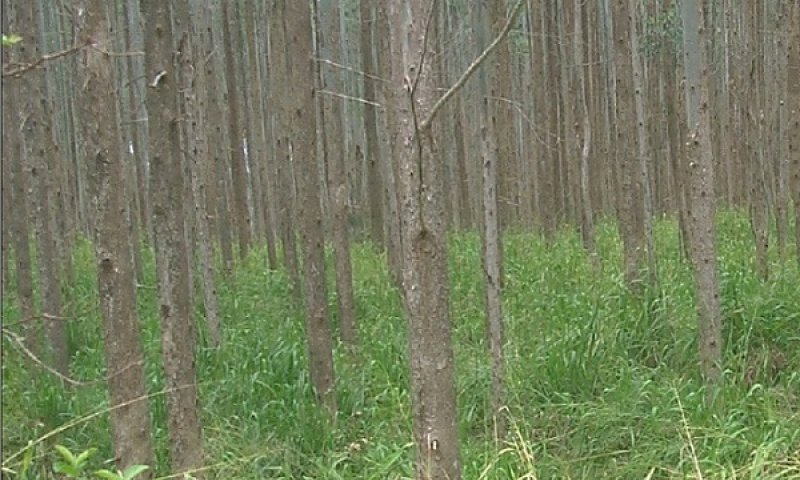
Figure 25. Eucalyptus with guineagrass understory, Hamakua mauka D Clausnitzer generic photo
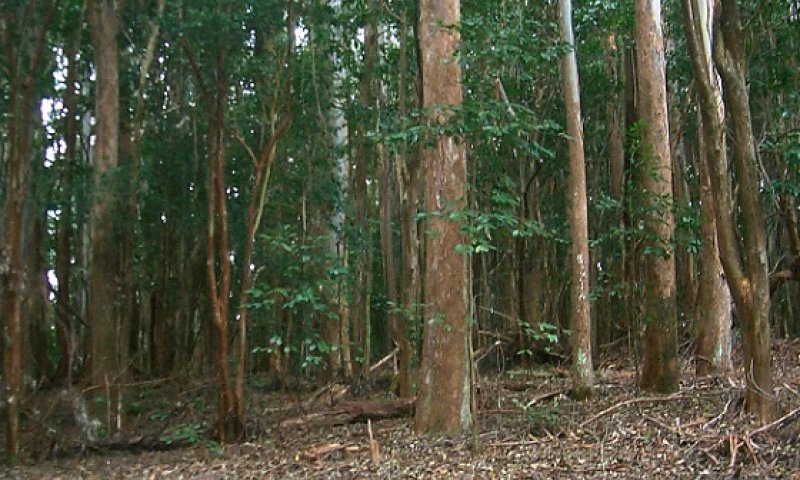
Figure 26. Eucalyptus with strawberry guava understory, Paauilo mauka 12/28/06 D Clausnitzer generic photo
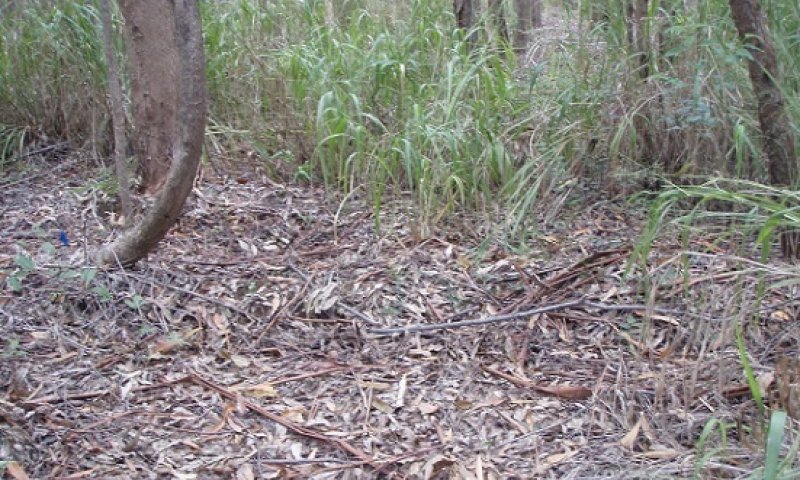
Figure 27. Heavy eucalyptus litter, Hamakua mauka 3/29/10 D Clausnitzer generic photo
This community is typically managed in the long term for economic returns. Many introduced timber species grow extremely well in the environment of this ecological site, where they also may be free of pests that are present in their native habitats.
Forest overstory. Various species of Eucalyptus are most commonly planted, including the hybrid E. grandis x urophylla, grand eucalyptus (E. grandis), rainbow gum (E. deglupta), red gum (E. robusta), and blue gum (E. saligna). Other valuable species can be planted, including African mahogany (Khaya senegalensis), Honduran mahogany (Swietenia macrophylla), tropical ash or shamel ash (Fraxinus uhdei), toon or Australian red cedar (Toona ciliata), and Spanish cedar (Cedrela odorata). Other species are also possible. Consult with NRCS, the University of Hawaii Extension Forester, or a private consultant to ensure that noninvasive species are selected and that species are planted in suitable elevation ranges. Few introduced timber species are suitable for the full elevation range of this ecological site.
Koa is a valuable, fast-growing native tree that can be planted on these sites. It is much more likely to thrive at elevations higher than about 1500 feet (460 meters); lower elevation plantings are often subject to diseases. Feral and domestic animals must be fenced out of koa plantations for enough years to allow the trees to attain a stature at which animals are unable to push down and eat them. Trampling of koa’s shallow roots and eating the trees’ bark can remain a problem for a longer time. There are examples of adequately mature koa stands being maintained along with careful cattle grazing in silvopastures.
Forest understory. Guineagrass is usually abundant beneath the timber trees; despite being shaded by trees, it can form a nearly continuous canopy cover and attain heights of 3 to 4.5 feet (1 to 1.5 meters). Guineagrass appears to be partially suppressed beneath mature stands of Eucalyptus species, possibly due to shade and the density and chemical composition of the tree litter. Strawberry guava can form dense stands beneath any timber species.
Table 17. Soil surface cover
| Tree basal cover | 4-5% |
|---|---|
| Shrub/vine/liana basal cover | 0% |
| Grass/grasslike basal cover | 0.1-1.0% |
| Forb basal cover | 0% |
| Non-vascular plants | 0% |
| Biological crusts | 0% |
| Litter | 85-90% |
| Surface fragments >0.25" and <=3" | 0.1-1.0% |
| Surface fragments >3" | 0.1-1.0% |
| Bedrock | 0% |
| Water | 0% |
| Bare ground | 3-5% |
Table 18. Woody ground cover
| Downed wood, fine-small (<0.40" diameter; 1-hour fuels) | – |
|---|---|
| Downed wood, fine-medium (0.40-0.99" diameter; 10-hour fuels) | – |
| Downed wood, fine-large (1.00-2.99" diameter; 100-hour fuels) | 0-1% |
| Downed wood, coarse-small (3.00-8.99" diameter; 1,000-hour fuels) | 0-1% |
| Downed wood, coarse-large (>9.00" diameter; 10,000-hour fuels) | – |
| Tree snags** (hard***) | – |
| Tree snags** (soft***) | – |
| Tree snag count** (hard***) | |
| Tree snag count** (hard***) |
* Decomposition Classes: N - no or little integration with the soil surface; I - partial to nearly full integration with the soil surface.
** >10.16cm diameter at 1.3716m above ground and >1.8288m height--if less diameter OR height use applicable down wood type; for pinyon and juniper, use 0.3048m above ground.
*** Hard - tree is dead with most or all of bark intact; Soft - most of bark has sloughed off.
Table 19. Canopy structure (% cover)
| Height Above Ground (ft) | Tree | Shrub/Vine | Grass/ Grasslike |
Forb |
|---|---|---|---|---|
| <0.5 | 0% | 0% | 0% | 0% |
| >0.5 <= 1 | 0% | 0% | 0% | 0% |
| >1 <= 2 | 0% | 0% | 5-10% | 0-1% |
| >2 <= 4.5 | 0-1% | 0% | 10-80% | 0% |
| >4.5 <= 13 | 0-1% | – | – | – |
| >13 <= 40 | 0-1% | – | – | – |
| >40 <= 80 | 85-90% | – | – | – |
| >80 <= 120 | 1-5% | – | – | – |
| >120 | – | – | – | – |
State 4
Invaded Understory State
This state consists of one community phase. It arises by invasion by introduced species of intact native forest (the Reference State) or, in some cases, of native overstory stands from which the original understory has been cleared. Native species are unable to regenerate in the highly competitive understory of introduced plants and eventually die out. With time, large introduced tree species will emerge to replace the native overstory trees and form a new overstory. When this last step has occurred, the site will have transitioned to State 5, Invaded Overstory and Understory State. Disturbance of the soil and direct damage to native understory plants by introduced ungulates, particularly pigs and cattle, will speed the transition to this state by killing native plants and by creating better germination sites for introduced species. Restoration to the Reference State or a facsimile of it is possible by fencing the site, removing all ungulates, applying herbicides, and replanting native species when needed. Restoration efforts will be affected depending on the degree of invasion by introduced species and by the species that have invaded the site. Long term weed management and fence maintenance will be necessary.
Community 4.1
Koa - `ohi`a lehua/strawberry guava/kahili ginger
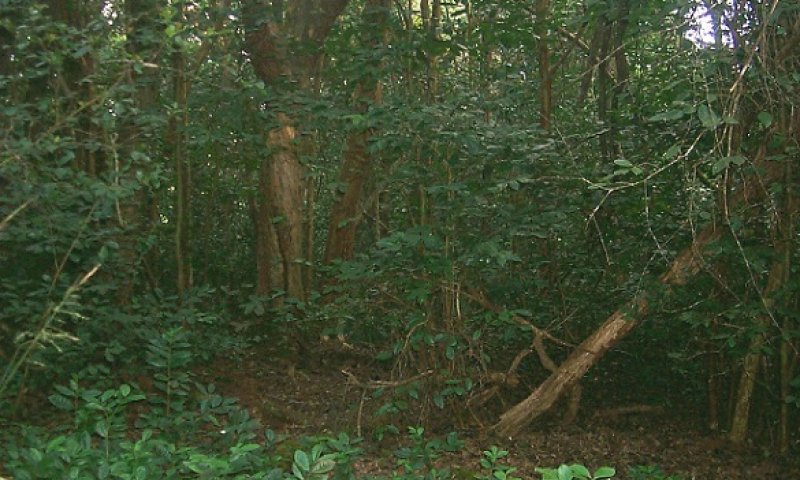
Figure 28. Strawberry guava understory 12/28/06 D Clausnitzer MU956
This community phase has an intact or diminished overstory of large ohia lehua and/or koa trees with a dense understory of introduced shrubs, ferns, vines, grasses, and small trees.
Forest overstory. The overstory consists of ohia lehua and/or koa. Secondary canopy native species are somewhat diminished. Kopiko or wild coffee (Psychotria spp.) is the most common native species remaining in the secondary canopy.
Forest understory. The only native species remaining in the lower canopy levels are a few hapuu (Cibotium glaucum) or hapuu li (Cibotium menziesii), traces of small kopiko, some peperomia (Peperomia spp.) at ground level, an occasional ieie vine (Freycenetia arborea), and a few patches of uluhe or Old World forkedfern. Some small native fern species may be found growing on trees.
The understory is usually dominated by a nearly impenetrable stand of strawberry guava or waiawi (Psidium cattleianum), which is usually 10 to about 30 feet (3 to 9 meters) tall. Other species indicated on the table grow sparsely beneath the strawberry guava or fill in gaps between it.
Table 20. Soil surface cover
| Tree basal cover | 2-3% |
|---|---|
| Shrub/vine/liana basal cover | 0.0-0.1% |
| Grass/grasslike basal cover | 0.0-0.1% |
| Forb basal cover | 0.0-0.1% |
| Non-vascular plants | 5-10% |
| Biological crusts | 0% |
| Litter | 50-80% |
| Surface fragments >0.25" and <=3" | 0.1-1.0% |
| Surface fragments >3" | 0.1-1.0% |
| Bedrock | 0% |
| Water | 0% |
| Bare ground | 5-10% |
Table 21. Woody ground cover
| Downed wood, fine-small (<0.40" diameter; 1-hour fuels) | – |
|---|---|
| Downed wood, fine-medium (0.40-0.99" diameter; 10-hour fuels) | – |
| Downed wood, fine-large (1.00-2.99" diameter; 100-hour fuels) | – |
| Downed wood, coarse-small (3.00-8.99" diameter; 1,000-hour fuels) | 2-5% |
| Downed wood, coarse-large (>9.00" diameter; 10,000-hour fuels) | 0-1% |
| Tree snags** (hard***) | – |
| Tree snags** (soft***) | – |
| Tree snag count** (hard***) | |
| Tree snag count** (hard***) | 1-2 per acre |
* Decomposition Classes: N - no or little integration with the soil surface; I - partial to nearly full integration with the soil surface.
** >10.16cm diameter at 1.3716m above ground and >1.8288m height--if less diameter OR height use applicable down wood type; for pinyon and juniper, use 0.3048m above ground.
*** Hard - tree is dead with most or all of bark intact; Soft - most of bark has sloughed off.
Table 22. Canopy structure (% cover)
| Height Above Ground (ft) | Tree | Shrub/Vine | Grass/ Grasslike |
Forb |
|---|---|---|---|---|
| <0.5 | 0-1% | 0-1% | 0-1% | 0-1% |
| >0.5 <= 1 | 0-1% | 0-1% | 0-1% | 0-1% |
| >1 <= 2 | 0-1% | 0-1% | 0-1% | 0-1% |
| >2 <= 4.5 | 3-5% | – | – | – |
| >4.5 <= 13 | 10-20% | – | – | – |
| >13 <= 40 | 20-25% | – | – | – |
| >40 <= 80 | 0% | – | – | – |
| >80 <= 120 | 10-20% | – | – | – |
| >120 | – | – | – | – |
State 5
Invaded Overstory and Understory State
This state is comprised of one plant community dominated by introduced species in both the overstory and understory. Understory vegetation usually is very sparse to nonexistent. Remnant individuals of a few native species may persist. This state might be considered a dead end as far as further succession or transition to another state. Restoration to a facsimile of the Reference State could probably be done with expensive and intensive practices followed by long-term weed management. Clearing of the site followed by establishment of an overstory of noninvasive, introduced timber trees with a native understory as an intermediate step to native forest restoration may also be done.
Community 5.1
Strawberry guava - faya tree/kahili ginger
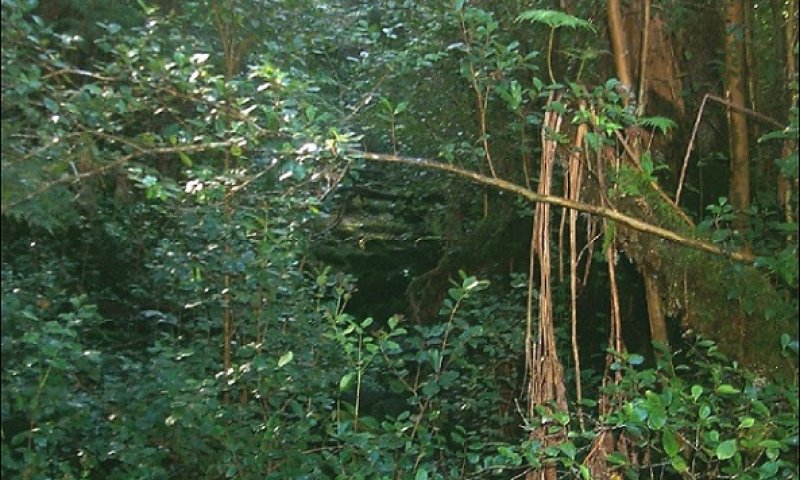
Figure 29. Strawberry guava stand with remnant hapuu 12/6/06 D Clausnitzer MU955
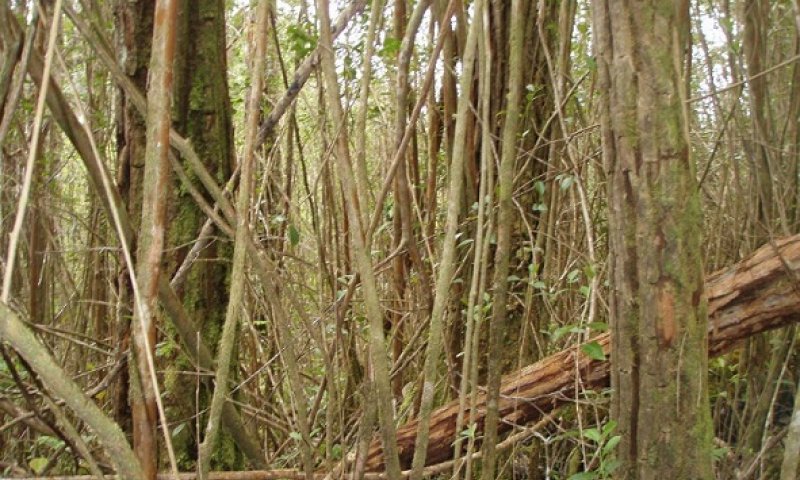
Figure 30. "Prison bar" strawberry guava infestation D Clausnitzer generic photo
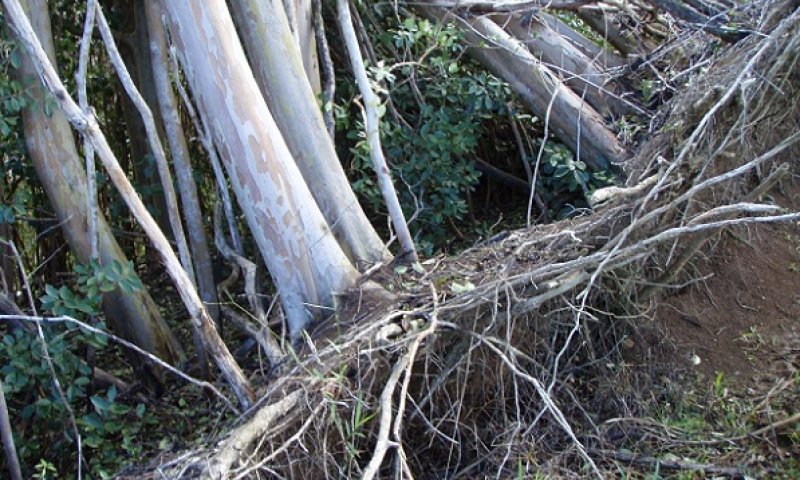
Figure 31. Strawberry guava roots exposed by bulldozer D Clausnitzer generic photo
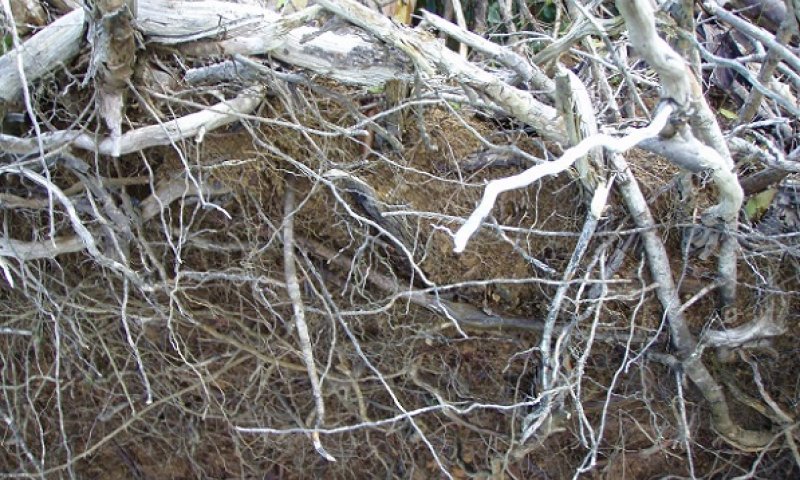
Figure 32. Closeup of exposed strawberry guava root system D Clausnitzer generic photo
It is possible that shifts will eventually occur in the introduced species that dominate the site, particularly if tall stature, competitive tree species are present. This would change the mix of species present and may affect soil chemistry (e.g. nitrate availability or organic matter), but would not represent a transition to another state. Sites that are completely dominated by dense stands of strawberry guava typically show no indications (death or partial death of stands; emergence of potentially taller tree species) of yielding to change in the foreseeable future.
Forest overstory. Depending on local seed sources, invasive trees of moderate stature including strawberry guava, christmasberry, or common guava can dominate a given site initially, but strawberry guava generally will become dominant over time. Taller statured introduced trees including silkoak (Grevillea robusta), albizia or peacocksplume (Falcataria moluccana), and octopus tree (Schefflera actinophylla) can potentially emerge through the canopy of moderate stature species.
A few remnant ohia lehua and koa trees often remain as emergents above the canopy of introduced species, but no seedling or saplings are likely to be survive.
Forest understory. The tree overstory species are highly competitive and produce dense shade. A variety of introduced understory species is often present but in small numbers. Typical species include Koster’s curse or soapbush (Clidemia hirta), kahili ginger or Kahila garland-lily (Hedychium gardnerianum), and some shade tolerant grass species.
Scattered individuals of remnant native species such as kopiko, hapuu, and uluhe may remain in the understory.
Table 23. Soil surface cover
| Tree basal cover | 1-4% |
|---|---|
| Shrub/vine/liana basal cover | 0.1-1.0% |
| Grass/grasslike basal cover | 0.0-0.1% |
| Forb basal cover | 0.0-0.1% |
| Non-vascular plants | 3-5% |
| Biological crusts | 0% |
| Litter | 70-90% |
| Surface fragments >0.25" and <=3" | 0.1-1.0% |
| Surface fragments >3" | 0.1-1.0% |
| Bedrock | 0% |
| Water | 0% |
| Bare ground | 3-5% |
Table 24. Woody ground cover
| Downed wood, fine-small (<0.40" diameter; 1-hour fuels) | – |
|---|---|
| Downed wood, fine-medium (0.40-0.99" diameter; 10-hour fuels) | – |
| Downed wood, fine-large (1.00-2.99" diameter; 100-hour fuels) | – |
| Downed wood, coarse-small (3.00-8.99" diameter; 1,000-hour fuels) | 0-0% |
| Downed wood, coarse-large (>9.00" diameter; 10,000-hour fuels) | 0-0% |
| Tree snags** (hard***) | – |
| Tree snags** (soft***) | – |
| Tree snag count** (hard***) | |
| Tree snag count** (hard***) | 1-2 per acre |
* Decomposition Classes: N - no or little integration with the soil surface; I - partial to nearly full integration with the soil surface.
** >10.16cm diameter at 1.3716m above ground and >1.8288m height--if less diameter OR height use applicable down wood type; for pinyon and juniper, use 0.3048m above ground.
*** Hard - tree is dead with most or all of bark intact; Soft - most of bark has sloughed off.
State 6
Grazed Native Overstory State
This state consists of remnant native tree species forming an overstory with well-managed, relatively weed-free grasses. The overstory may have existed for some time, or may be in the process of forming where residual koa seeds are present in the soil.
Community 6.1
Koa - `ohi`a lehua/guineagrass - hilograss
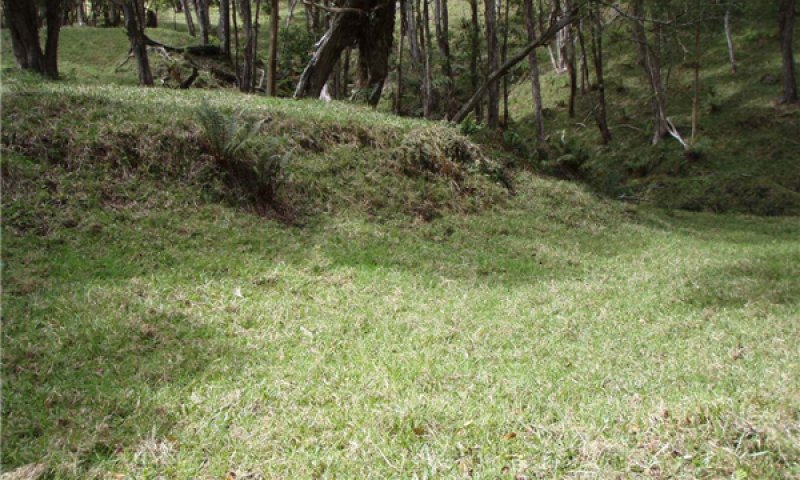
Figure 33. Native overstory with grazed understory, Hamakua 3/21/08 D Clausnitzer MU970
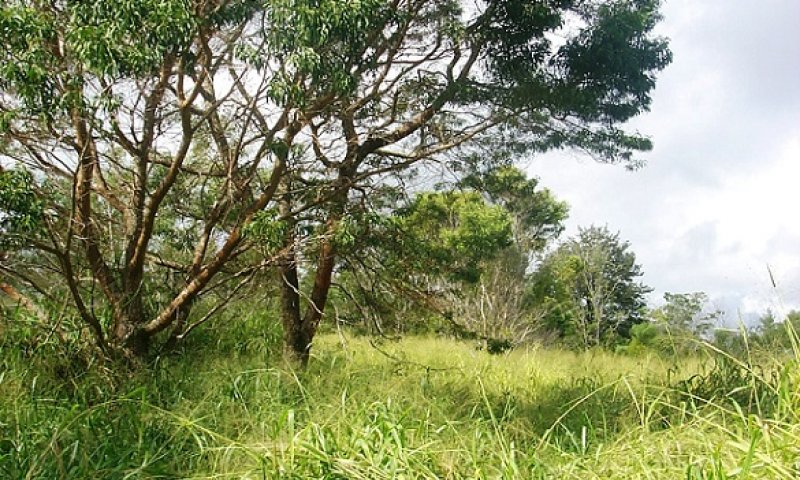
Figure 34. Young koa emerging through guineagrass, Paauilo mauka 12/28/06 D Clausnitzer MU961
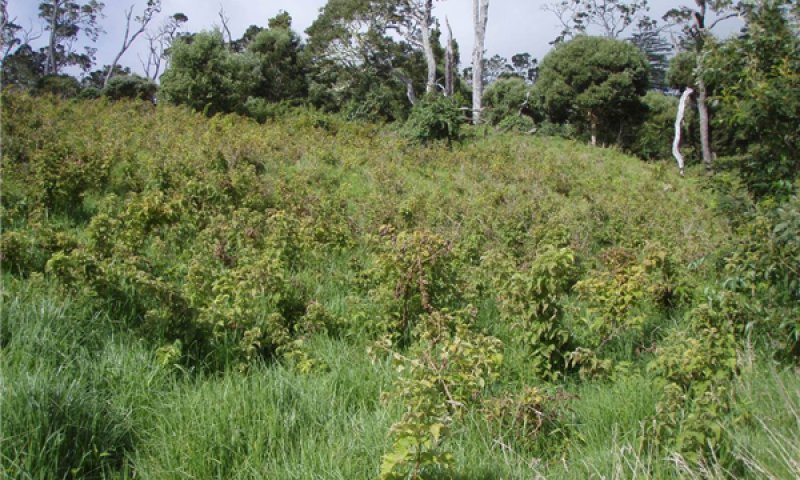
Figure 35. Native akala invading kikuyu grassland Humuula Trail 9/14/09 D Clausnitzer generic photo
This community phase is not common, but it presents good opportunities for restoration of the Reference Community Phase, or a facsimile of it, where it exists. It typically occurs in two forms. The first is where grazing has maintained a non-weedy grass understory beneath a remnant overstory of native trees that has not yet begun to senesce. The second is in grasslands in which a residual seed bank of koa trees existed and cattle were not present to browse the emerging small koa. In the first form, careful grassland management maintained low weed densities on the site. In both forms, it is advantageous for restoration if neighboring sites do not support high weed densities. It also is advantageous if the grassland is dominated by shorter-statured species such as hilograss or common carpetgrass rather than guineagrass. In the second form, even tall guineagrass grasslands will eventually be invaded and dominated by introduced woody shrubs and trees.
Forest overstory. The forest overstory is variable, depending on the history of the site. It may consist of: large, scattered koa and/or ohia lehua trees; stands of varying sized trees in varying densities across the site, possibly with ohia lehua, koa, olapa, papala, hapuu, pilo, and other species typical of the Reference Community Phase; or, scattered young koa trees that have managed to germinate from the residual seed bank and emerge through the grass cover.
Forest understory. The understory consists primarily of the common dominant grass species from community phases 2.1 and 2.2 of this ecological site, primarily guineagrass, common carpetgrass, and hilograss. Regeneration of native trees is not possible until livestock have been removed.
Where lower-stature grasses such as common carpetgrass or hilograss are dominant, it is common to find native fern genera such as Diplazium and Dryopteris spreading through the understory and sometimes achieving high densities. Be careful not to confuse the native hoio or Hawaii twinsorus fern (Diplazium sandwichianum) with the introduced hoio (Diplazium esculentum).
Table 25. Soil surface cover
| Tree basal cover | 0.1-1.0% |
|---|---|
| Shrub/vine/liana basal cover | 0.0-0.1% |
| Grass/grasslike basal cover | 40-50% |
| Forb basal cover | 0.1-1.0% |
| Non-vascular plants | 0% |
| Biological crusts | 0% |
| Litter | 40-50% |
| Surface fragments >0.25" and <=3" | 0.0-0.1% |
| Surface fragments >3" | 0.0-0.1% |
| Bedrock | 0% |
| Water | 0% |
| Bare ground | 1-5% |
Table 26. Woody ground cover
| Downed wood, fine-small (<0.40" diameter; 1-hour fuels) | – |
|---|---|
| Downed wood, fine-medium (0.40-0.99" diameter; 10-hour fuels) | – |
| Downed wood, fine-large (1.00-2.99" diameter; 100-hour fuels) | – |
| Downed wood, coarse-small (3.00-8.99" diameter; 1,000-hour fuels) | – |
| Downed wood, coarse-large (>9.00" diameter; 10,000-hour fuels) | – |
| Tree snags** (hard***) | – |
| Tree snags** (soft***) | – |
| Tree snag count** (hard***) | 0-2 per acre |
| Tree snag count** (hard***) | 0-3 per acre |
* Decomposition Classes: N - no or little integration with the soil surface; I - partial to nearly full integration with the soil surface.
** >10.16cm diameter at 1.3716m above ground and >1.8288m height--if less diameter OR height use applicable down wood type; for pinyon and juniper, use 0.3048m above ground.
*** Hard - tree is dead with most or all of bark intact; Soft - most of bark has sloughed off.
Table 27. Canopy structure (% cover)
| Height Above Ground (ft) | Tree | Shrub/Vine | Grass/ Grasslike |
Forb |
|---|---|---|---|---|
| <0.5 | – | 0-1% | 40-60% | 0-1% |
| >0.5 <= 1 | – | 0-1% | 20-30% | 0-1% |
| >1 <= 2 | – | 0-1% | 10-15% | 0-1% |
| >2 <= 4.5 | – | 0-1% | 5-10% | – |
| >4.5 <= 13 | – | – | – | – |
| >13 <= 40 | 1-5% | – | – | – |
| >40 <= 80 | 5-30% | – | – | – |
| >80 <= 120 | – | – | – | – |
| >120 | – | – | – | – |
Transition T1A
State 1 to 2
State 1, Reference State, can be converted to State 2, Naturalized Grassland State, by clearing the forest with heavy machinery. Most grasslands in this ecological site were originally cultivated for sugar cane and later converted to grassland. At the highest, coolest elevations of the ecological site, kikuyugrass and/or pangolagrass have been planted. At lower elevations where grasslands are on old sugarcane plantations, guineagrass (a former weed in the plantations) has volunteered and now dominates. Some grasslands may originally have been cleared by large numbers of feral and/or domestic livestock consuming the understory, including tree seedlings and saplings. This process would have left numerous large trees standing if not cut for timber. Large wildfires in the early 20th century also cleared some forest remnants.
Transition T1B
State 1 to 4
State 1, Reference State, can be converted to State 4, Invaded Understory State, by gradual replacement of the understory by shrubs, vines, grasses, and trees that outcompete the native understory species and hinder or prevent their reproduction. Some introduced vines can directly kill native plants, including large trees. This process is accelerated by ungulate foraging that helps introduced weed seeds, enhances weed germination by soil disturbance, and directly destroys native plants.
Transition T1C
State 1 to 6
This transition occurs by either clearing of native forest by machinery or gradual removal of native forest understory and elimination of native plant reproduction by long-term ungulate grazing.
Restoration pathway R2A
State 2 to 1
It may be possible to restore State 2, Naturalized Grassland State, to a plant community resembling State 1, Reference State, by intensive restoration practices followed by long-term maintenance. Control of grasses and any weeds currently in the grassland by mowing and herbicides must precede establishment of native species. Weed control would be a long-term process to maintain the site after establishment. Many weeds are shade-tolerant and would be able to invade the site even after canopy closure of native plants. Domestic and feral ungulates must be fenced out of the restoration site. However, managed grazing by domestic ungulates outside the fence would be useful to manage weedy vegetation outside the perimeter. Increasing shade from restored tree species may eventually cause a shift from C4 (warm-season) grass dominance (typically guineagrass or kikuyugrass) to C4 or C3 (cool-season) shade-tolerant grasses (typically meadow ricegrass, hilograss, or carpetgrass). This shade tolerant grass layer can be very dense and detrimental to establishment of native plants. Suppression of these grasses by herbicides and/or mulch (cardboard works well) until native plant litter begins to cover the grass.
Transition T2A
State 2 to 3
State 2, Naturalized Grassland State, may be converted to State 3, Planted Timber State, by controlling grasses and weedy shrubs by herbicides and/or mowing prior to and after planting of timber species (usually eucalyptus species).
Transition T2B
State 2 to 5
State 2, Naturalized Grassland State, may be converted to State 5, Invaded Overstory and Understory State, by abandonment. Common weed tree species are strawberry guava, christmasberry, faya tree, and common guava. Seeds of these species as well as weedy understory species are spread by mammals and birds.
Restoration pathway R4A
State 4 to 1
State 5, Invaded Understory State, may be restored to a plant community resembling State 1, Reference State. Before restoration of native understory plants, invasive understory plants must be eliminated by herbicide weed control and brush management practices. Also, feral and domestic ungulates must be excluded from the restoration site by a fence, and any remaining ungulates within the fenced site must be eliminated. If feral pigs are present, an intensive, short-term program must be employed to eliminate their population; otherwise, their rate of increase will outpace control efforts. Key native plant species that have been eliminated or greatly reduced in numbers generally must be restored by replanting. Long-term maintenance of the site using herbicides, hand-weeding, mulching, and fence repair is required.
Transition T4A
State 4 to 2
State 4, Invaded Understory State, can be converted to State 2, Naturalized Grassland State, Pasture by mechanical clearing of introduced plants and remnant native understory plants. Native overstory trees may be harvested for timber, knocked down and piled, or left to provide shade for livestock. If leaving large native trees for shade, care must be taken to not damage roots within about 20 feet (6 meters) of the trees. Introduced pasture grass species may then be seeded or sprigged into the site. Herbicide applications will be necessary before and during pasture establishment to control reemerging weed species.
Transition T4B
State 4 to 5
State 4, Invaded Understory State, transitions to State 5, Invaded Overstory and Understory State, over time. The native ohia lehua and koa trees that remain in the overstory are unable to successfully regenerate in the shady and highly competitive environment of the weedy understory. Eventually the native overstory trees die and are replaced by introduced tree species.
Restoration pathway R5A
State 5 to 2
State 5, Invaded Overstory and Understory State, may be restored to State 2, Naturalized Grassland State by mechanical clearing of overstory and understory vegetation, followed by herbicide control of re-emerging invasive species. Introduced grasses may then be seeded or sprigged into the site. Herbicide applications, mowing, and careful grazing practices will be necessary during and after pasture establishment to control reemerging weed species.
Restoration pathway R6A
State 6 to 1
This restoration occurs by removal of ungulates from the site, eventual removal of forage grasses by mowing, mulching, and herbicide application, replanting native species, and eventual natural reproduction by native species.
Transition T6A
State 6 to 2
This transition occurs either by elimination of native tree reproduction by long-term ungulate grazing or by weed invasion of abandoned sites.
Additional community tables
Table 28. Community 1.1 forest overstory composition
| Common name | Symbol | Scientific name | Nativity | Height (ft) | Canopy cover (%) | Diameter (in) | Basal area (square ft/acre) |
|---|---|---|---|---|---|---|---|
|
Tree
|
|||||||
| 'ohi'a lehua | MEPO5 | Metrosideros polymorpha | Native | 75–100 | 10–80 | 24–40 | – |
| koa | ACKO | Acacia koa | Native | 80–100 | 0–80 | 24–48 | – |
| olapalapa | CHTR2 | Cheirodendron trigynum | Native | 25–30 | 3–10 | – | – |
| woodland mirrorplant | CORH | Coprosma rhynchocarpa | Native | 16–20 | 1–5 | – | – |
| kolea lau nui | MYLE2 | Myrsine lessertiana | Native | 25–30 | 1–5 | – | – |
| wild coffee | PSYCH | Psychotria | Native | 20–25 | 1 | – | – |
| Hawai'i holly | ILAN | Ilex anomala | Native | 35–40 | 0.1–1 | – | – |
| olapalapa | CHTR2 | Cheirodendron trigynum | Native | 35–40 | 0.1–1 | – | – |
| koa | ACKO | Acacia koa | Native | 35–40 | 0–0.1 | – | – |
| 'ohi'a lehua | MEPO5 | Metrosideros polymorpha | Native | 30–40 | 0–0.1 | – | – |
|
Tree Fern
|
|||||||
| hapu'u | CIGL | Cibotium glaucum | Native | 15–20 | 30–50 | – | – |
| hapu'u li | CIME8 | Cibotium menziesii | Native | 15–20 | 5–15 | – | – |
| hapu'u | CIGL | Cibotium glaucum | Native | 25–30 | 3–5 | – | – |
| hapu'u li | CIME8 | Cibotium menziesii | Native | 25–30 | 1–3 | – | – |
| Chamisso's manfern | CICH | Cibotium chamissoi | Native | 15–20 | 0.1–1 | – | – |
| Chamisso's manfern | CICH | Cibotium chamissoi | Native | 25–30 | 0–0.1 | – | – |
Table 29. Community 1.1 forest understory composition
| Common name | Symbol | Scientific name | Nativity | Height (ft) | Canopy cover (%) | |
|---|---|---|---|---|---|---|
|
Grass/grass-like (Graminoids)
|
||||||
| Hawai'i birdcatching sedge | UNUN | Uncinia uncinata | Native | 0.5–1 | 0.1–1 | |
| Oahu sedge | CAWA | Carex wahuensis | Native | 0.5–1 | 0.1–1 | |
| Hawai'i sedge | CAAL12 | Carex alligata | Native | 1–2 | 0.1–1 | |
| korthal mistletoe | KORTH | Korthalsella | Native | 0.5–1 | 0.1–1 | |
|
Forb/Herb
|
||||||
| Hawai'i twinsorus fern | DISA3 | Diplazium sandwichianum | Native | 2–3 | 1–2 | |
| bog stenogyne | STCA9 | Stenogyne calaminthoides | Native | 0.5–1 | 0.1–1 | |
| peperomia | PEPER | Peperomia | Native | 0.5–1 | 0.1–1 | |
| pua'akuhinia | ASME4 | Astelia menziesiana | Native | 0.5–1 | 0.1–1 | |
| Hawai'i pokeweed | PHSA2 | Phytolacca sandwicensis | Native | 1–2 | 0–0.1 | |
| 'ohe | JOAS | Joinvillea ascendens | Native | 1–2 | 0–0.1 | |
| Hawai'i stenogyne | STMA3 | Stenogyne macrantha | Native | 0.5–1 | 0–0.1 | |
| mohihi | STSC4 | Stenogyne scrophularioides | Native | 0.5–1 | 0–0.1 | |
| Hawai'i phyllostegia | PHFL6 | Phyllostegia floribunda | Native | 0.5–1 | 0–0.1 | |
| kiponapona | PHRA6 | Phyllostegia racemosa | Native | 0.5–1 | 0–0.1 | |
| streambed phyllostegia | PHVE4 | Phyllostegia vestita | Native | 0.5–1 | 0–0.1 | |
| Laupahoehoe phyllostegia | PHWA3 | Phyllostegia warshaueri | Native | 0.5–1 | 0–0.1 | |
|
Fern/fern ally
|
||||||
| alpine woodfern | DRWA | Dryopteris wallichiana | Native | 1–2 | 1–5 | |
| akolea | ATMI | Athyrium microphyllum | Native | 1–2 | 1–3 | |
| sadleria | SADLE | Sadleria | Native | 1–3 | 0.1–1 | |
| graceful kihifern | ADPI | Adenophorus pinnatifidus | Native | 0.5–1 | 0.1–1 | |
| wahini noho mauna | ADTA | Adenophorus tamariscinus | Native | 0.5–1 | 0.1–1 | |
| fringed spleenwort | ASSC8 | Asplenium schizophyllum | Native | 0.5–1 | 0.1–1 | |
| loulu | COPI3 | Coniogramme pilosa | Native | 0.5–1 | 0.1–1 | |
| Hawai'i woodfern | DRHA | Dryopteris hawaiiensis | Native | 1–2 | 0.1–1 | |
| Pacific woodfern | DRSA | Dryopteris sandwicensis | Native | 2–3 | 0.1–1 | |
| onetooth woodfern | DRUN | Dryopteris unidentata | Native | 1–2 | 0.1–1 | |
| ohiaku | HYRE | Hymenophyllum recurvum | Native | 0.2–0.5 | 0.1–1 | |
| Boston swordfern | NEEX | Nephrolepis exaltata | Native | 1–2 | 0.1–1 | |
| island lacefern | NORU | Nothoperanema rubiginosum | Native | 1–2 | 0.1–1 | |
| Old World forkedfern | DILI | Dicranopteris linearis | Native | 3–6 | 0.1–1 | |
| Old World adderstongue | OPPEP | Ophioglossum pendulum ssp. pendulum | Native | 0.5–1 | 0.1–1 | |
| Hawai'i air fern | PNSA | Pneumatopteris sandwicensis | Native | 1–2 | 0.1–1 | |
| Cretan brake | PTCR2 | Pteris cretica | Native | 0.5–1 | 0.1–1 | |
| kolokolo | GRTE | Grammitis tenella | Native | 0.5–1 | 0.1–1 | |
| weeping fern | LETH6 | Lepisorus thunbergianus | Native | 0.5–1 | 0.1–1 | |
| royal tonguefern | ELCR2 | Elaphoglossum crassifolium | Native | 0.5–1 | 0.1–1 | |
| ekaha | ELHI3 | Elaphoglossum hirtum | Native | 0.5–1 | 0.1–1 | |
| waimakanui | PTEX | Pteris excelsa | Native | 0.5–1 | 0.1–1 | |
| Hawai'i umbrella fern | STOW | Sticherus owhyensis | Native | 1–5 | 0.1–1 | |
| palapalai | MIST4 | Microlepia strigosa | Native | 1–2 | 0.1–1 | |
| spleenwort | ASPLE | Asplenium | Native | 1–3 | 0.1–1 | |
| rainforest spleenwort | ASNO4 | Asplenium normale | Native | 1–2 | 0.1–1 | |
| vandenboschia | VANDE | Vandenboschia | Native | 0.2–0.5 | 0.1–0.2 | |
| flatfork fern | PSCO3 | Psilotum complanatum | Native | 0.5–1 | 0.1–0.2 | |
| whisk fern | PSNU | Psilotum nudum | Native | 0.5–1 | 0.1 | |
| western brackenfern | PTAQ | Pteridium aquilinum | Native | 1–2 | 0–0.1 | |
| scrambling fern | DIPI3 | Diplopterygium pinnatum | Native | 1–5 | 0–0.1 | |
| Chinese creepingfern | ODCH | Odontosoria chinensis | Native | 1–2 | 0–0.1 | |
| Hawai'i potato fern | MADO | Marattia douglasii | Native | 1–2 | – | |
|
Shrub/Subshrub
|
||||||
| kanawao | BRAR6 | Broussaisia arguta | Native | 3–8 | 3–8 | |
| Waimea pipturus | PIAL2 | Pipturus albidus | Native | 4–8 | 0.1–1 | |
| 'ilihia | CYPL5 | Cyrtandra platyphylla | Native | 2–3 | 0–1 | |
| cyrtandra | CYRTA | Cyrtandra | Native | 1–3 | 0–1 | |
| naupaka kuahiwi | SCCH3 | Scaevola chamissoniana | Native | 2–3 | 0.1–1 | |
| ohelo kau la'au | VACA8 | Vaccinium calycinum | Native | 2–4 | 0.1–1 | |
| smallflower clermontia | CLPA8 | Clermontia parviflora | Native | 5–6 | 0–0.1 | |
| pele clermontia | CLPE2 | Clermontia peleana | Native | 5–6 | 0–0.1 | |
| clermontia | CLERM | Clermontia | Native | 5–6 | 0–0.1 | |
| Hawai'i mirrorplant | COCY3 | Coprosma cymosa | Native | 3–4.5 | 0–0.1 | |
| 'ilihia | CYPL5 | Cyrtandra platyphylla | Native | 4–5 | 0–0.1 | |
| Laupahoehoe cyrtandra | CYTI | Cyrtandra tintinnabula | Native | 2–3 | 0–0.1 | |
| pukiawe | STTA | Styphelia tameiameiae | Native | 2–5 | 0–0.1 | |
| largeflower false lobelia | TRGR8 | Trematolobelia grandifolia | Native | 5–6 | 0–0.1 | |
| small treefern | CYPA7 | Cyathea parvula | Native | 5–6 | 0–0.1 | |
| 'aku 'aku | CYTR6 | Cyanea tritomantha | Native | 5–6 | 0–0.1 | |
| forest cyrtandra | CYGI3 | Cyrtandra giffardii | Native | 1–2 | 0–0.1 | |
| anini | EUSA6 | Eurya sandwicensis | Native | 2–4 | 0–0.1 | |
| au | HEAC3 | Hedyotis acuminata | Native | 2–3 | 0–0.1 | |
| paleflower labordia | LATI2 | Labordia tinifolia | Native | 2–3 | 0–0.1 | |
| hillside clermontia | CLLI3 | Clermontia lindseyana | Native | 5–6 | 0–0.1 | |
|
Tree
|
||||||
| wild coffee | PSYCH | Psychotria | Native | 3–4.5 | 0.1–1 | |
| manono | HEHI8 | Hedyotis hillebrandii | Native | 10–13 | 0.1–1 | |
| hopue | URGL | Urera glabra | Native | 15–20 | 0.1–1 | |
| variable starviolet | HETE21 | Hedyotis terminalis | Native | 8–12 | 0.1–1 | |
| olomea | PESA3 | Perrottetia sandwicensis | Native | 3–4.5 | 0.1–1 | |
| olomea | PESA3 | Perrottetia sandwicensis | Native | 12–16 | 1 | |
| olomea | PESA3 | Perrottetia sandwicensis | Native | 8–12 | 0.1–1 | |
| Hawai'i holly | ILAN | Ilex anomala | Native | 10–13 | 0.1–1 | |
| kolea lau nui | MYLE2 | Myrsine lessertiana | Native | 10–13 | 0.1–1 | |
| hame | ANPU2 | Antidesma pulvinatum | Native | 3–4.5 | 0–1 | |
| ha'a | ANPL2 | Antidesma platyphyllum | Native | 10–13 | 0.1–1 | |
| hame | ANPU2 | Antidesma pulvinatum | Native | 10–13 | 0.1–1 | |
| papala | CHARP | Charpentiera | Native | 10–13 | 0.1–1 | |
| woodland mirrorplant | CORH | Coprosma rhynchocarpa | Native | 3–4.5 | 0.1–1 | |
| olapalapa | CHTR2 | Cheirodendron trigynum | Native | 10–13 | 1 | |
| olapalapa | CHTR2 | Cheirodendron trigynum | Native | 3–4.5 | 1 | |
| wild coffee | PSYCH | Psychotria | Native | 10–13 | 1 | |
| papala | CHARP | Charpentiera | Native | 3–4.5 | 0–1 | |
| woodland mirrorplant | CORH | Coprosma rhynchocarpa | Native | 10–13 | 1 | |
| ha'a | ANPL2 | Antidesma platyphyllum | Native | 3–4.5 | 0–1 | |
| neneleau | RHSA2 | Rhus sandwicensis | Native | 10–13 | 0–0.1 | |
| kolea lau nui | MYLE2 | Myrsine lessertiana | Native | 3–4.5 | 0.1 | |
| Hawai'i holly | ILAN | Ilex anomala | Native | 3–4.5 | 0–0.1 | |
| Remy's gardenia | GARE | Gardenia remyi | Native | 10–13 | 0–0.1 | |
| kapu melicope | MERA2 | Melicope radiata | Native | 9–12 | 0–0.1 | |
| kokea lau li'i | MYSA2 | Myrsine sandwicensis | Native | 5–8 | 0–0.1 | |
| island yellowwood | OCHA | Ochrosia haleakalae | Native | 7–10 | 0–0.1 | |
| aulu | PISA5 | Pisonia sandwicensis | Native | 10–15 | 0–0.1 | |
| Hawai'i pilo kea | PLRE4 | Platydesma remyi | Native | 8–12 | 0–0.1 | |
| lo'ulu | PRLA4 | Pritchardia lanigera | Native | 22–25 | 0–0.1 | |
| manono | HEHI8 | Hedyotis hillebrandii | Native | 3–4.5 | – | |
| 'ohi'a lehua | MEPO5 | Metrosideros polymorpha | Native | 3–4.5 | – | |
| variable starviolet | HETE21 | Hedyotis terminalis | Native | 3–4.5 | – | |
| koa | ACKO | Acacia koa | Native | 10–13 | – | |
| koa | ACKO | Acacia koa | Native | 3–4.5 | – | |
| 'ohi'a lehua | MEPO5 | Metrosideros polymorpha | Native | 10–13 | – | |
|
Tree Fern
|
||||||
| hapu'u | CIGL | Cibotium glaucum | Native | 10–15 | 15–40 | |
| hapu'u li | CIME8 | Cibotium menziesii | Native | 10–15 | 2–10 | |
| hapu'u | CIGL | Cibotium glaucum | Native | 2–5 | 1–3 | |
| hapu'u li | CIME8 | Cibotium menziesii | Native | 2–5 | 0.1–1 | |
| Chamisso's manfern | CICH | Cibotium chamissoi | Native | 10–15 | 0–0.1 | |
|
Vine/Liana
|
||||||
| 'ie'ie | FRAR | Freycinetia arborea | Native | 1–40 | 1–3 | |
| Hawai'i blackberry | RUHA | Rubus hawaiensis | Native | 2–4 | 0.1–1 | |
| Hawai'i greenbrier | SMME | Smilax melastomifolia | Native | 1–30 | 0.1–1 | |
| Maile | ALST11 | Alyxia stellata | Native | 1–15 | 0.1–1 | |
| kilioe | EMPA | Embelia pacifica | Native | 1–6 | 0–0.1 | |
Table 30. Community 2.1 plant community composition
| Group | Common name | Symbol | Scientific name | Annual production (lb/acre) | Foliar cover (%) | |
|---|---|---|---|---|---|---|
|
Grass/Grasslike
|
||||||
| 1 | Naturalized Warm Season Tallgrasses | 11900–14000 | ||||
| guineagrass | URMA3 | Urochloa maxima | 11900–14000 | – | ||
| elephant grass | PEPU2 | Pennisetum purpureum | 0–140 | – | ||
| 2 | Naturalized Warm Season Midgrasses | 0–140 | ||||
| kikuyugrass | PECL2 | Pennisetum clandestinum | 0–300 | – | ||
| Colombian bluestem | SCCO10 | Schizachyrium condensatum | 0–140 | – | ||
| smut grass | SPIN4 | Sporobolus indicus | 0–140 | – | ||
| broomsedge bluestem | ANVI2 | Andropogon virginicus | 0–140 | – | ||
| Rhodes grass | CHGA2 | Chloris gayana | 0–140 | – | ||
| hairy crabgrass | DISA | Digitaria sanguinalis | 0–140 | – | ||
| East Indian crabgrass | DISE6 | Digitaria setigera | 0–140 | – | ||
| Indian goosegrass | ELIN3 | Eleusine indica | 0–140 | – | ||
| shortleaf spikesedge | KYBR | Kyllinga brevifolia | 0–140 | – | ||
| hilograss | PACO14 | Paspalum conjugatum | 0–140 | – | ||
| Vasey's grass | PAUR2 | Paspalum urvillei | 0–140 | – | ||
| rose Natal grass | MERE9 | Melinis repens | 0–140 | – | ||
|
Forb
|
||||||
| 3 | Naturalized Forbs | 140–700 | ||||
| threeflower ticktrefoil | DETR4 | Desmodium triflorum | 140–420 | – | ||
| perennial soybean | NEWI2 | Neonotonia wightii | 140–420 | – | ||
| common sowthistle | SOOL | Sonchus oleraceus | 0–140 | – | ||
| spiny amaranth | AMSP | Amaranthus spinosus | 0–140 | – | ||
| sensitive partridge pea | CHNI2 | Chamaecrista nictitans | 0–140 | – | ||
| smooth rattlebox | CRPAO | Crotalaria pallida var. obovata | 0–140 | – | ||
| lilac tasselflower | EMSO | Emilia sonchifolia | 0–140 | – | ||
| Christmas candlestick | LENE | Leonotis nepetifolia | 0–140 | – | ||
| shameplant | MIPU8 | Mimosa pudica | 0–140 | – | ||
|
Shrub/Vine
|
||||||
| 4 | Naturalized Shrubs and Small Trees | 140–700 | ||||
| anil de pasto | INSU | Indigofera suffruticosa | 140–420 | – | ||
| threelobe false mallow | MACO6 | Malvastrum coromandelianum | 0–140 | – | ||
| cure for all | PLCA10 | Pluchea carolinensis | 0–140 | – | ||
| guava | PSGU | Psidium guajava | 0–140 | – | ||
| castorbean | RICO3 | Ricinus communis | 0–140 | – | ||
| Brazilian peppertree | SCTE | Schinus terebinthifolius | 0–140 | – | ||
| balloonplant | ASPH2 | Asclepias physocarpa | 0–140 | – | ||
Table 31. Community 2.2 forest understory composition
| Common name | Symbol | Scientific name | Nativity | Height (ft) | Canopy cover (%) | |
|---|---|---|---|---|---|---|
|
Grass/grass-like (Graminoids)
|
||||||
| hilograss | PACO14 | Paspalum conjugatum | Introduced | 0.5–1 | 15–25 | |
| guineagrass | URMA3 | Urochloa maxima | Introduced | 2–4 | 15–25 | |
| common carpetgrass | AXFI | Axonopus fissifolius | Introduced | 0.5–1 | 15–25 | |
| broomsedge bluestem | ANVI2 | Andropogon virginicus | Introduced | 1–2 | 3–10 | |
| Colombian bluestem | SCCO10 | Schizachyrium condensatum | Introduced | 1–2 | 1–10 | |
| marsh bristlegrass | SEPA10 | Setaria parviflora | Introduced | 0.5–1 | 1–10 | |
| shortleaf spikesedge | KYBR | Kyllinga brevifolia | Introduced | 0.5–1 | 1–5 | |
| rose Natal grass | MERE9 | Melinis repens | Introduced | 0.5–1 | 0.1–1 | |
| Vasey's grass | PAUR2 | Paspalum urvillei | Introduced | 2–3 | 0.1–1 | |
| kikuyugrass | PECL2 | Pennisetum clandestinum | Introduced | 0.5–1 | 0.1–1 | |
| Rhodes grass | CHGA2 | Chloris gayana | Introduced | 0.5–2 | 0.1–1 | |
| hairy crabgrass | DISA | Digitaria sanguinalis | Introduced | 0.5–1 | 0.1–1 | |
| East Indian crabgrass | DISE6 | Digitaria setigera | Introduced | 0.5–1 | 0.1–1 | |
| Indian goosegrass | ELIN3 | Eleusine indica | Introduced | 0.5–1 | 0.1–1 | |
| smut grass | SPIN4 | Sporobolus indicus | Introduced | 0.5–1 | 0.1–1 | |
| wild sugarcane | SASP | Saccharum spontaneum | Introduced | 3–6 | 0–0.1 | |
|
Forb/Herb
|
||||||
| climbing dayflower | CODI5 | Commelina diffusa | Introduced | 0.5–1 | 0.1–1 | |
| smooth rattlebox | CRPAO | Crotalaria pallida var. obovata | Introduced | 1–2 | 0.1–1 | |
| lilac tasselflower | EMSO | Emilia sonchifolia | Introduced | 1–2 | 0.1–1 | |
| common sowthistle | SOOL | Sonchus oleraceus | Introduced | 1–2 | 0.1–1 | |
| threelobe false mallow | MACO6 | Malvastrum coromandelianum | Introduced | 1–2 | 0.1–1 | |
| balloonplant | ASPH2 | Asclepias physocarpa | Introduced | 2–3 | 0.1–1 | |
| sensitive partridge pea | CHNI2 | Chamaecrista nictitans | Introduced | 0.5–1 | 0.1–1 | |
| shameplant | MIPU8 | Mimosa pudica | Introduced | 0.5–1 | 0.1–1 | |
| Christmas candlestick | LENE | Leonotis nepetifolia | Native | 1–2 | 0.1–1 | |
| spiny amaranth | AMSP | Amaranthus spinosus | Introduced | 1–2 | 0.1–1 | |
| threeflower ticktrefoil | DETR4 | Desmodium triflorum | Introduced | – | 0–0.1 | |
| spreading snakeroot | AGRI2 | Ageratina riparia | Introduced | 0.5–1 | 0–0.1 | |
|
Fern/fern ally
|
||||||
| scaly swordfern | NEHI | Nephrolepis hirsutula | Introduced | 1–2 | 0.1–1 | |
| western brackenfern | PTAQ | Pteridium aquilinum | Native | 1–2 | 0–0.1 | |
| Old World forkedfern | DILI | Dicranopteris linearis | Native | 0.5–2 | 0–0.1 | |
|
Shrub/Subshrub
|
||||||
| cure for all | PLCA10 | Pluchea carolinensis | Introduced | 1–4 | 0.1–1 | |
| anil de pasto | INSU | Indigofera suffruticosa | Introduced | 1–2 | 0.1–1 | |
| castorbean | RICO3 | Ricinus communis | Introduced | 2–5 | 0.1–1 | |
|
Tree
|
||||||
| guava | PSGU | Psidium guajava | Introduced | 2–4.5 | 0.1–1 | |
| Brazilian peppertree | SCTE | Schinus terebinthifolius | Introduced | 2–5 | 0.1–1 | |
| African tuliptree | SPCA2 | Spathodea campanulata | Introduced | 2–3 | 0–0.1 | |
| firetree | MOFA | Morella faya | Introduced | 1–4 | 0–0.1 | |
| octopus tree | SCAC2 | Schefflera actinophylla | Introduced | 1–2 | 0–0.1 | |
| peacocksplume | FAMO | Falcataria moluccana | Introduced | 2–4 | 0–0.1 | |
|
Vine/Liana
|
||||||
| sawtooth blackberry | RUAR2 | Rubus argutus | Introduced | 1–4 | 0.1–1 | |
| West Indian raspberry | RURO | Rubus rosifolius | Introduced | 1–4 | 0.1–1 | |
Table 32. Community 2.3 forest understory composition
| Common name | Symbol | Scientific name | Nativity | Height (ft) | Canopy cover (%) | |
|---|---|---|---|---|---|---|
|
Grass/grass-like (Graminoids)
|
||||||
| common carpetgrass | AXFI | Axonopus fissifolius | Introduced | 0.5–1 | 15–25 | |
| hilograss | PACO14 | Paspalum conjugatum | Introduced | 0.5–1 | 15–25 | |
| broomsedge bluestem | ANVI2 | Andropogon virginicus | Introduced | 1–3 | 5–15 | |
| Colombian bluestem | SCCO10 | Schizachyrium condensatum | Introduced | 1–3 | 5–15 | |
| marsh bristlegrass | SEPA10 | Setaria parviflora | Introduced | 1–2 | 1–5 | |
| guineagrass | URMA3 | Urochloa maxima | Introduced | 2–4 | 1–5 | |
| shortleaf spikesedge | KYBR | Kyllinga brevifolia | Introduced | 0.5–1 | 1–5 | |
| smut grass | SPIN4 | Sporobolus indicus | Introduced | 0.5–1 | 0.1–1 | |
| rose Natal grass | MERE9 | Melinis repens | Introduced | 1–2 | 0.1–1 | |
| Rhodes grass | CHGA2 | Chloris gayana | Introduced | 1–2 | 0.1–1 | |
| hairy crabgrass | DISA | Digitaria sanguinalis | Introduced | 1–2 | 0.1–1 | |
| East Indian crabgrass | DISE6 | Digitaria setigera | Introduced | 1–2 | 0.1–1 | |
| Indian goosegrass | ELIN3 | Eleusine indica | Introduced | 0.5–1 | 0.1–1 | |
| Vasey's grass | PAUR2 | Paspalum urvillei | Introduced | 2–3 | 0.1–1 | |
|
Forb/Herb
|
||||||
| spiny amaranth | AMSP | Amaranthus spinosus | Introduced | 2–4 | 1–5 | |
| spreading snakeroot | AGRI2 | Ageratina riparia | Introduced | 0.5–2 | 0.1–1 | |
| balloonplant | ASPH2 | Asclepias physocarpa | Introduced | 2–4.5 | 0.1–1 | |
| sensitive partridge pea | CHNI2 | Chamaecrista nictitans | Native | 0.1–0.5 | 0.1–1 | |
| shameplant | MIPU8 | Mimosa pudica | Introduced | 0.1–0.5 | 0.1–1 | |
| climbing dayflower | CODI5 | Commelina diffusa | Native | 0.2–0.5 | 0.1–1 | |
| smooth rattlebox | CRPAO | Crotalaria pallida var. obovata | Native | 0.5–3 | 0.1–1 | |
| lilac tasselflower | EMSO | Emilia sonchifolia | Introduced | 0.5–2 | 0.1–1 | |
| common sowthistle | SOOL | Sonchus oleraceus | Introduced | 0.5–2 | 0.1–1 | |
| threelobe false mallow | MACO6 | Malvastrum coromandelianum | Native | 2–4 | 0.1–1 | |
| Christmas candlestick | LENE | Leonotis nepetifolia | Introduced | 1–2 | 0.1–1 | |
|
Fern/fern ally
|
||||||
| scaly swordfern | NEHI | Nephrolepis hirsutula | Introduced | 0.5–2 | 0.1–1 | |
|
Shrub/Subshrub
|
||||||
| cure for all | PLCA10 | Pluchea carolinensis | Introduced | 2–5 | 3–5 | |
| lantana | LACA2 | Lantana camara | Introduced | 1–4.5 | 3–5 | |
| castorbean | RICO3 | Ricinus communis | Introduced | 3–5 | 0.1–1 | |
|
Tree
|
||||||
| guava | PSGU | Psidium guajava | Introduced | 4.5–8 | 5–10 | |
| firetree | MOFA | Morella faya | Introduced | 2–12 | 1–5 | |
| guava | PSGU | Psidium guajava | Introduced | 1–4.5 | 1–2 | |
| firetree | MOFA | Morella faya | Introduced | 2–6 | 0.1–1 | |
| octopus tree | SCAC2 | Schefflera actinophylla | Introduced | 1–4.5 | 0.1–1 | |
| peacocksplume | FAMO | Falcataria moluccana | Introduced | 4–6 | 0.1–1 | |
| Brazilian peppertree | SCTE | Schinus terebinthifolius | Introduced | 2–4.5 | 0.1–1 | |
| Brazilian peppertree | SCTE | Schinus terebinthifolius | Introduced | 4.5–10 | 0.1–1 | |
| African tuliptree | SPCA2 | Spathodea campanulata | Introduced | 4–7 | 0.1–1 | |
| small Philippine acacia | ACCO | Acacia confusa | Introduced | 5–7 | 0.1–1 | |
|
Vine/Liana
|
||||||
| sawtooth blackberry | RUAR2 | Rubus argutus | Introduced | 2–5 | 0.1–1 | |
| West Indian raspberry | RURO | Rubus rosifolius | Introduced | 2–5 | 0.1–1 | |
Table 33. Community 3.1 forest overstory composition
| Common name | Symbol | Scientific name | Nativity | Height (ft) | Canopy cover (%) | Diameter (in) | Basal area (square ft/acre) |
|---|---|---|---|---|---|---|---|
|
Tree
|
|||||||
| gum | EUCAL | Eucalyptus | Introduced | 70–90 | 85–90 | – | – |
Table 34. Community 3.1 forest understory composition
| Common name | Symbol | Scientific name | Nativity | Height (ft) | Canopy cover (%) | |
|---|---|---|---|---|---|---|
|
Grass/grass-like (Graminoids)
|
||||||
| guineagrass | URMA3 | Urochloa maxima | Introduced | 1–4 | 20–80 | |
| weeping grass | MIST | Microlaena stipoides | Introduced | 0.5–1 | 0.1–1 | |
| hilograss | PACO14 | Paspalum conjugatum | Introduced | 0.5–1 | 0.1–1 | |
|
Forb/Herb
|
||||||
| Kahila garland-lily | HEGA | Hedychium gardnerianum | Introduced | 2–4 | 0–0.1 | |
|
Fern/fern ally
|
||||||
| scaly swordfern | NEHI | Nephrolepis hirsutula | Introduced | 1–2 | 0.1–1 | |
|
Shrub/Subshrub
|
||||||
| soapbush | CLHI3 | Clidemia hirta | Introduced | 1–2 | 0–0.1 | |
|
Tree
|
||||||
| strawberry guava | PSCA | Psidium cattleianum | Introduced | 2–10 | 0–0.1 | |
|
Vine/Liana
|
||||||
| West Indian raspberry | RURO | Rubus rosifolius | Introduced | 1–2 | 0–0.1 | |
Table 35. Community 4.1 forest overstory composition
| Common name | Symbol | Scientific name | Nativity | Height (ft) | Canopy cover (%) | Diameter (in) | Basal area (square ft/acre) |
|---|---|---|---|---|---|---|---|
|
Tree
|
|||||||
| strawberry guava | PSCA | Psidium cattleianum | Introduced | 20–30 | 25–40 | – | – |
| strawberry guava | PSCA | Psidium cattleianum | Introduced | 5–13 | 10–20 | – | – |
| 'ohi'a lehua | MEPO5 | Metrosideros polymorpha | Native | 40–70 | 5–15 | 20–30 | – |
| koa | ACKO | Acacia koa | Native | 40–70 | 5–15 | 20–30 | – |
| strawberry guava | PSCA | Psidium cattleianum | Introduced | 2–4.5 | 3–6 | – | – |
| wild coffee | PSYCH | Psychotria | Native | 20–30 | 0.1–1 | – | – |
| wild coffee | PSYCH | Psychotria | Native | 2–4.5 | 0–0.1 | – | – |
| fig | FICUS | Ficus | Introduced | 0.5–4.5 | 0–0.1 | – | – |
| fig | FICUS | Ficus | Introduced | 30–70 | – | – | – |
|
Tree Fern
|
|||||||
| hapu'u | CIGL | Cibotium glaucum | Native | 5–14 | 0.1–1 | – | – |
| hapu'u li | CIME8 | Cibotium menziesii | Native | 5–14 | 0–1 | – | – |
| Cooper's cyathea | CYCO18 | Cyathea cooperi | Introduced | 5–10 | 0–0.1 | – | – |
Table 36. Community 4.1 forest understory composition
| Common name | Symbol | Scientific name | Nativity | Height (ft) | Canopy cover (%) | |
|---|---|---|---|---|---|---|
|
Grass/grass-like (Graminoids)
|
||||||
| common carpetgrass | AXFI | Axonopus fissifolius | Introduced | 0.5–1 | 0.1–1 | |
| weeping grass | MIST | Microlaena stipoides | Introduced | 0.5–2 | 0.1–1 | |
| palmgrass | SEPA6 | Setaria palmifolia | Introduced | 0.5–2 | 0–0.1 | |
|
Forb/Herb
|
||||||
| Kahila garland-lily | HEGA | Hedychium gardnerianum | Introduced | 2–4.5 | 0.1–1 | |
| dotted smartweed | POPU5 | Polygonum punctatum | Introduced | 0.5–2 | 0.1–1 | |
| peperomia | PEPER | Peperomia | Native | 0.5–1 | 0–0.1 | |
|
Fern/fern ally
|
||||||
| weeping fern | LETH6 | Lepisorus thunbergianus | Native | 0.5–1 | 0–0.1 | |
| whisk fern | PSNU | Psilotum nudum | Native | 0.5–1 | 0–0.1 | |
| Old World forkedfern | DILI | Dicranopteris linearis | Native | 1–2 | 0–0.1 | |
|
Shrub/Subshrub
|
||||||
| soapbush | CLHI3 | Clidemia hirta | Introduced | 2–4.5 | 0.1–1 | |
|
Vine/Liana
|
||||||
| 'ie'ie | FRAR | Freycinetia arborea | Native | 0.5–1 | 0–0.1 | |
Table 37. Community 6.1 forest overstory composition
| Common name | Symbol | Scientific name | Nativity | Height (ft) | Canopy cover (%) | Diameter (in) | Basal area (square ft/acre) |
|---|---|---|---|---|---|---|---|
|
Tree
|
|||||||
| 'ohi'a lehua | MEPO5 | Metrosideros polymorpha | Native | 40–70 | 5–20 | – | – |
| koa | ACKO | Acacia koa | Native | 40–60 | 5–20 | – | – |
| neneleau | RHSA2 | Rhus sandwicensis | Native | 8–15 | 1–2 | – | – |
| koa | ACKO | Acacia koa | Native | 13–20 | 0–0.1 | – | – |
| 'ohi'a lehua | MEPO5 | Metrosideros polymorpha | Native | 13–20 | 0–0.1 | – | – |
Table 38. Community 6.1 forest understory composition
| Common name | Symbol | Scientific name | Nativity | Height (ft) | Canopy cover (%) | |
|---|---|---|---|---|---|---|
|
Grass/grass-like (Graminoids)
|
||||||
| guineagrass | URMA3 | Urochloa maxima | Introduced | 2–4 | 50–90 | |
| hilograss | PACO14 | Paspalum conjugatum | Introduced | 0.5–1 | 20–60 | |
| weeping grass | MIST | Microlaena stipoides | Introduced | 0.5–1 | 5–30 | |
| kikuyugrass | PECL2 | Pennisetum clandestinum | Introduced | 1–2 | 5–20 | |
| common carpetgrass | AXFI | Axonopus fissifolius | Introduced | 0.5–1 | 0.1–1 | |
|
Fern/fern ally
|
||||||
| alpine woodfern | DRWA | Dryopteris wallichiana | Native | 1–2 | 0.1–1 | |
|
Vine/Liana
|
||||||
| sawtooth blackberry | RUAR2 | Rubus argutus | Introduced | 2–4 | 0.1–1 | |
| West Indian raspberry | RURO | Rubus rosifolius | Introduced | 2–4 | 0.1–1 | |
Interpretations
Animal community
Native Wildlife
This ecological site provides habitat to the following native birds: elepaio (Chasiempis sandwichensis), amakihi (Hemignathus virens), apapane (Himatione sanguinea), and iiwi (Vestiaria coccinea) omao (Myadestes obscurus), Hawaiian crow or alala (Corvus hawaiensis), akepa (Loxops coccineus), akiapolaau (Hemignathus wilsoni). It also is home to the Hawaiian hoary bat or opeapea (Lasiurus cenarius semotus). These species may be encountered within all community phases but are most prevalent in open canopy native forest and forest adjacent to clearings. Community phases that provide open grassland or savannah-like settings provide habitat for the native Hawaiian hawk, or ‘io (Buteo solitarius) and Hawaiian owl or pueo (Asio flammeus spp. sandwichensis).
A large number of native bird species have gone extinct both before and after European contact.
Introduced Wildlife
This ecological site provides habitat to a variety of introduced birds. Species such as wild turkey (Meleagris gallopavo), ring-necked pheasant (Phasianus colchicus), Erckel’s francolin (Pternistis erckelii), black francolin (Francolinus francolinus), and kalij pheasant (Lophura leucomelanos) are considered to be game birds.
Feral pigs, sheep, goats and cattle are common. They provide hunting opportunities but are very destructive to native vegetation. Public sport hunting typically does not have a major impact on their populations, especially in remote areas.
Introduced wildlife species are able to utilize all community phases within the ecological site.
Grazing Interpretations
The following table lists suggested initial stocking rates for cattle under the Forage Value Rating system for only community phase 2.1, with guineagrass. For kikuyugrass pastures on this ecological site, refer to grazing interpretations in Ecological Site Description F160XY502 Isomesic-Cool Isothermic Forest. The following are conservative estimates that should be used only as guidelines in the initial stages of the conservation planning process. Sometimes the current plant composition does not entirely match any particular community phase in this ecological site description. Because of this, a field visit is recommended to document plant composition and production. More precise carrying capacity estimates should eventually be calculated using the following stocking rate information along with animal preference data, particularly when grazers other than cattle are involved. Under more intensive grazing management, improved harvest efficiencies may result in an increased stocking rate.
Forage Value Rating (note 1)
Very High 0.20-0.22 acre/AUM 5.13-4.49 AUM/acre
High 0.22-0.26 acre/AUM 4.49-3.85 AUM/acre
Moderate 0.26-0.39 acre/AUM 3.85-2.56 AUM/acre
Low 0.39-+ acre/AUM 2.56-+ AUM/acre
(note 1) The Forage Value Rating System is not an ecological evaluation of community phase 2.1. It is a utilitarian rating of the existing forage value for that specific plant community.
(note 2) Conservationists must use considerable judgment, because some pastures in the Very High forage class could be producing less than normal volumes of forage, and adjustments would need to be made in the initial stocking rate.
(note 3) Stocking rates vary in accordance with such factors as kind and class of livestock or wildlife, season of use, harvest efficiency and fluctuations in climate. Figures shown are calculated assuming a 30% adjustment factor to account for harvest efficiency and the “take half – leave half” principle. Actual use records and on-site inventories for individual sites, together with a determination of the degree to which the sites have been grazed, offer the most reliable basis for developing initial stocking rates.
Community phase 2.1 is suitable for grazing by all kinds and classes of livestock, at any season, particularly cattle. However, this site is best utilized for grazing during the major plant growth period described in the “Climate” section. This site is suited for grazing by both cow-calf operations and stocker operations. However, sheep can be grazed on this site as well. This site is poorly suited to continuous year-long use if the community phase 2.1 is to be maintained. Herbaceous forage can be deficient in protein during the drier months.
Hydrological functions
Water infiltration and retention tend to be high on these deep to very deep volcanic ash soils. The deep, 4-tiered canopy and heavy litter layer of the Reference State keep soil erosion to a minimum.
The tall, dense grass growth in well-managed grassland (community phase 2.1) provides considerable protection against erosion. Phases 2.2 and 2.3 have lower-stature, less dense vegetation and more bare ground that provide somewhat less erosion protection.
States with large amounts of introduced vegetation (States 3, 4, 5, and 6) apparently would provide good erosion protection.
Recreational uses
Hiking, hunting, and bird watching are common recreational uses in this ecological site. Good examples of the Reference Community can be accessed by foot trails in State Forests and Hawaii Volcanoes National Park. Public roads provide access to the other community phases.
Wood products
There is excellent potential for production of timber in this ecological site, including eucalyptus and high-value specialty woods such as koa.
Very little site index information is not available for Hawaiian forests, as tropical trees do not form annual tree rings from which tree age can be estimated. Long-term measurements have been made of some tree plantations, primarily on introduced timber species and on a limited number of soils.
In Reference State native forests, estimates of standing timber ranged from 800 to 2000 cubic feet per acre for ohia lehua and 1500 to 3700 cubic feet per acre for koa.
Other products
The Reference State can provide limited harvests of maile (Alyxia stellata; syn. A. oliviformis) vines for leis and edible ferns.
Other information
Definitions
These definitions have been greatly simplified for brevity and do not cover every aspect of each topic.
Aa lava: A type of basaltic lava having a rough, jagged, clinkery surface and a vesicular interior.
Alluvial: Materials or processes associated with transportation and/or deposition by running water.
Aquic soil moisture regime: A regime in which the soil is free of dissolved oxygen because it is saturated by water. This regime typically exists in bogs or swamps.
Aridic soil moisture regime: A regime in which defined parts of the soil are, in normal years, dry for more than half of the growing season and moist for less than 90 consecutive days during the growing season. In Hawaii it is associated with hot, dry areas with plants such as kiawe, wiliwili, and buffelgrass. The terms aridic and torric are basically the same.
Ash field: a land area covered by a thick or distinctive deposit of volcanic ash that can be traced to a specific source and has well defined boundaries. The term “ash flow” is erroneously used in the Physiographic section of this ESD due to a flaw in the national database.
Ashy: A “soil texture modifier” for volcanic ash soils having a water content at the crop wilting point of less than 30 percent; a soil that holds relatively less water than “medial” and “hydrous” soils.
Available water capacity: The amount of soil water available to plants to the depth of the first root-restricting layer.
Basal area or basal cover: The cross sectional area of the stem or stems of a plant or of all plants in a stand.
Blue rock: The dense, hard, massive lava that forms the inner core of an aa lava flow.
Bulk density: the weight of dry soil per unit of volume. Lower bulk density indicates a greater amount of pore space that can hold water and air in a soil.
CaCO3 equivalent: The amount of free lime in a soil. Free lime exists as solid material and typically occurs in regions with a dry climate.
Canopy cover: The percentage of ground covered by the vertical projection downward of the outermost perimeter of the spread of plant foliage. Small openings within the canopy are included.
Community pathway: A description of the causes of shifts between community phases. A community pathway is reversible and is attributable to succession, natural disturbances, short-term climatic variation, and facilitating practices, such as grazing management.
Community phase: A unique assemblage of plants and associated dynamic soil properties within a state.
Dominant species: Plant species or species groups that exert considerable influence upon a community due to size, abundance, or cover.
Drainage class: The frequency and duration of a water table in a soil. There are seven drainage classes, ranging from “excessively drained” (soils with very rare or very deep water tables) to “well drained” (soils that provide ample water for plant growth but are not so wet as to inhibit root growth) to “very poorly drained” (soils with a water table at or near the surface during much of the growing season that inhibits growth of most plants).
Electrical conductivity (EC): A measure of the salinity of a soil. The standard unit is deciSiemens per meter (dS/m), which is numerically equivalent to millimhos per centimeter (mmhos/cm). An EC greater than about 4 dS/m indicates a salinity level that is unfavorable to growth of most plants.
Friability: A soil consistency term pertaining to the ease of crumbling of soils.
Hydrous: A “soil texture modifier” for volcanic ash soils having a water content at the crop wilting point of 100 percent or more; a soil that holds more water than “medial” or “ashy” soils.
Ion exchange capacity: The ability of soil materials such as clay or organic matter to retain ions (which may be plant nutrients) and to release those ions for uptake by roots.
Isohyperthermic soil temperature regime: A regime in which mean annual soil temperature is 72 degrees F (22 degrees C) or higher and mean summer and mean winter soil temperatures differ by less than 11 degrees F (6 degrees C) at a specified depth.
Isomesic soil temperature regime: A regime in which mean annual soil temperature is 47 degrees F (8 degrees C) or higher but lower than 59 degrees F (15 degrees C) and mean summer and mean winter soil temperatures differ by less than 11 degrees F (6 degrees C) at a specified depth.
Isothermic soil temperature regime: A regime in which mean annual soil temperature is 59 degrees F (15 degrees C) or higher but lower than 72 degrees F (22 degrees C) and mean summer and mean winter soil temperatures differ by less than 11 degrees F (6 degrees C) at a specified depth.
Kipuka: An area of land surrounded by younger (more recent) lava. Soils and plant communities within a kipuka are older than, and often quite different from, those on the surrounding surfaces.
Major Land Resource Area (MLRA): A geographic area defined by NRCS that is characterized by a particular pattern of soils, climate, water resources, and land uses. The island of Hawaii contains nine MLRAs, some of which also occur on other islands in the state.
Makai: a Hawaiian word meaning “toward the sea.”
Mauka: a Hawaiian word meaning “toward the mountain” or “inland.”
Medial: A “soil texture modifier” for volcanic ash soils having a water content at the crop wilting point of 30 to 100 percent; a soil that holds an amount of water intermediate to “hydrous” or “ashy” soils.
Naturalized plant community: A community dominated by adapted, introduced species. It is a relatively stable community resulting from secondary succession after disturbance. Most grasslands in Hawaii are in this category.
Pahoehoe lava: A type of basaltic lava with a smooth, billowy, or rope-like surface and vesicular interior.
Parent material: Unconsolidated and chemically weathered material from which a soil is developed.
Perudic soil moisture regime: A very wet regime found where precipitation exceeds evapotranspiration in all months of normal years. On the island of Hawaii, this regime is found on top of Kohala and on parts of the windward side of Mauna Kea.
pH: The numerical expression of the relative acidity or alkalinity of a soil sample. A pH of 7 is neutral; a pH below 7 is acidic and a pH above 7 is basic.
Phosphorus adsorption: The ability of soil materials to tightly retain phosphorous ions, which are a plant nutrient. Some volcanic ash soils retain phosphorus so strongly that it is partly unavailable to plants.
Reference community phase: The phase exhibiting the characteristics of the reference state and containing the full complement of plant species that historically occupied the site. It is the community phase used to classify an ecological site.
Reference state: A state that describes the ecological potential and natural or historical range of variability of an ecological site.
Restoration pathway: A term describing the environmental conditions and practices that are required to recover a state that has undergone a transition.
Sodium adsorption ratio (SAR): A measure of the amount of dissolved sodium relative to calcium and magnesium in the soil water. SAR values higher than 13 create soil conditions unfavorable to most plants.
Soil moisture regime: A term referring to the presence or absence either of ground water or of water held at a tension of less than 1500 kPa (the crop wilting point) in the soil or in specific horizons during periods of the year.
Soil temperature regime: A defined class based on mean annual soil temperature and on differences between summer and winter temperatures at a specified depth.
Soil reaction: Numerical expression in pH units of the relative acidity or alkalinity or a soil.
State: One or more community phases and their soil properties that interact with the abiotic and biotic environment to produce persistent functional and structural attributes associated with a characteristic range of variability.
State-and-transition model: A method used to display information about relationships between vegetation, soil, animals, hydrology, disturbances, and management actions on an ecological site.
Torric soil moisture regime: See Aridic soil moisture regime.
Transition: A term describing the biotic or abiotic variables or events that contribute to loss of state resilience and result in shifts between states.
Udic soil moisture regime: A regime in which the soil is not dry in any part for as long as 90 cumulative days in normal years, and so provides ample moisture for plants. In Hawaii it is associated with forests in which hapuu (tree ferns) are usually moderately to highly abundant.
Ustic soil moisture regime: A regime in which moisture is limited but present at a time when conditions are suitable for plant growth. In Hawaii it usually is associated with dry forests and subalpine shrublands.
Supporting information
Type locality
| Location 1: Hawaii County, HI | |
|---|---|
| Latitude | 19° 55′ 59″ |
| Longitude | 155° 17′ 25″ |
| General legal description | Hawaii County, Island of Hawaii, USGS Quad: Keanakolu. From main (highest) Laupahoehoe Natural Area Reserve gate, drive mauka 2.5 miles. Walk W 100 yards into forest. |
Other references
Armstrong RW. 1973. Atlas of Hawai`i. University of Hawai`i Press, Honolulu.
Athens JS. Ch. 12 Hawaiian Native Lowland Vegetation in Prehistory in Historical Ecology in the Pacific Islands – Prehistoric Environmental and Landscape Change. Kirch, PV and TL Hunt, eds. 1997. Yale U. Press, New Haven.
Burney DA, HF James, LP Burney, SL Olson, W Kikuchi, WL Wagner, M Burney, D McCloskey, D Kikuchi, FV Grady, R Gage II, and R Nishek. 2001. Fossil evidence for a diverse biota from Kauai and tis transformation since human arrival. Ecological Monographs 71:615-641.
Christensen CC. 1983. Report 17: Analysis of land snails. In Archaeological investigations of the Mudlane-Waimea-Kawaihae Road Corridor, Island of Hawaii: an Interdisciplinary Study of an Environmental Transect. Clark JT and Kirch PV, eds. Dept. of Anthropology, Bernice Pauahi Bishop Museum, Report 83-1, Honolulu, HI.
Clark JT. 1983. Report 3: The Waimea-Kawaihae Region: Historical Background. In Archaeological investigations of the Mudlane-Waimea-Kawaihae Road Corridor, Island of Hawaii: an Interdisciplinary Study of an Environmental Transect. Clark, J.T. and Kirch, P.V., eds. Dept. of Anthropology, Bernice Pauahi Bishop Museum, Report 83-1, Honolulu, HI.
Clark JT. 1983. Report 7: Archaeological investigations in Section 4. In Archaeological investigations of the Mudlane-Waimea-Kawaihae Road Corridor, Island of Hawaii: an Interdisciplinary Study of an Environmental Transect. Clark JT and Kirch PV, eds. Dept. of Anthropology, Bernice Pauahi Bishop Museum, Report 83-1, Honolulu, HI.
Clark JT. 1983. Report 8: Archaeological investigations of agricultural sites in the Waimea area. In Archaeological investigations of the Mudlane-Waimea-Kawaihae Road Corridor, Island of Hawaii: an Interdisciplinary Study of an Environmental Transect. Clark JT and Kirch PV, eds. Dept. of Anthropology, Bernice Pauahi Bishop Museum, Report 83-1, Honolulu, HI.
Craighill ES and EG Handy. 1991. Native Planters in Old Hawaii – Their Life, Lore, and Environment. Bernice P. Bishop Museum Bulletin 233, Bishop Museum Press, Honolulu, HI
Cuddihy LW and CP Stone. 1990. Alteration of Native Hawaiian Vegetation: Effects of Humans, Their Activities and Introductions. Honolulu: University of Hawaii Cooperative National Park Resources Study Unit.
Hazlett RW and DW Hyndman. 1996. Roadside Geology of Hawaii. Mountain Press Publishing Company, Missoula MT.
Henke LA. 1929. A Survey of Livestock in Hawaii. Research Publication No. 5. University of Hawaii, Honolulu.
Horrocks M. 2009. Sweet potato (Ipomoea batatas) and banana (Musa sp.) microfossils in deposits from the Kona Field System, Island of Hawaii. Journal of Archaeological Science, May 2009.
Kirch PV. 1982. The impact of the prehistoric Polynesians in the Hawaiian ecosystem. Pacific Science 36(1):1-14.
Kirch PV. 1983. Introduction. In Archaeological investigations of the Mudlane-Waimea-Kawaihae Road Corridor, Island of Hawaii: an Interdisciplinary Study of an Environmental Transect. Clark JT and Kirch PV, eds. Dept. of Anthropology, Bernice Pauahi Bishop Museum, Report 83-1, Honolulu, HI.
Kirch PV. 1985. Feathered Gods and Fishhooks: An Introduction to Hawaiian Archaeology and Prehistory. Honolulu: University of Hawaii Press.
Kirch PV. 2000. On the Road of the Winds: An Archaeological History of the Pacific Islands Before European Contact. Berkeley: University of California Press.
Little EL Jr. and RG Skolmen. 1989. Common Forest Trees of Hawaii (Native and Introduced). US Department of Agriculture-US Forest Service Agriculture Handbook No. 679. (out of print). Available at www.fs.fed.us/psw/publications/documents/misc/ah679.pdf
Maly K and O Maly. 2004. He Moolelo Aina: A Cultural Study of the Puu O Umi Natural Area Reserve and Kohala-Hamakua Mountain Lands, Districts of Kohala and Hamakua, Island of Hawaii. Kumu Pono Associates, Hilo HI.
McEldowney H. 1983. Report 16: A description of major vegetation patterns in the Waimea-Kawaihae region during the early historic period. Archaeological investigations of the Mudlane-Waimea-Kawaihae Road Corridor, Island of Hawaii: an Interdisciplinary Study of an Environmental Transect. Clark JT and Kirch PV, eds. Dept. of Anthropology, Bernice Pauahi Bishop Museum, Report 83-1, Honolulu, HI.
Mueller-Dombois D and FR Fosberg. 1998. Vegetation of the Tropical Pacific Islands. Springer-Verlag New York, Inc.
Palmer, DD. 2003. Hawaii’s Ferns and Fern Allies. University of Hawai`i Press, Honolulu.
Pratt HD. 1998. A Pocket Guide to Hawaii’s Trees and Shrubs. Mutual Publishing, Honolulu.
Rock JF. The Indigenous Trees of the Hawaiian Islands. 1st edition 1913, reprinted 1974, Charles E. Tuttle Company, Rutland, VT and Tokyo, Japan.
Shoji SD, M Nanzyo, and R Dahlgren. 1993. Volcanic Ash Soils: Genesis, Properties and Utilization. Elsevier, New York.
Sohmer SH and R Gustafson. 2000. Plants and Flowers of Hawaii. University of Hawaii Press, Honolulu.
Steadman DW. 1995. Prehistoric extinctions of Pacific island birds: biodiversity meets zooarchaeology. Science 267:1123-1131.
Vitousek P. 2004. Nutrient Cycling and Limitation: Hawaii as a Model Ecosystem. Princeton University Press, Princeton and Oxford.
Wagner WL, DR Herbst, and SH Sohmer. 1999. Manual of the Flowering Plants of Hawaii, Revised Edition. Bishop Museum Press, Honolulu.
Welch, DJ 1983. Report 5: Archaeological investigations in Section 2. In Archaeological investigations of the Mudlane-Waimea-Kawaihae Road Corridor, Island of Hawai’i: an Interdisciplinary Study of an Environmental Transect. Clark JT and Kirch PV, eds. Dept. of Anthropology, Bernice Pauahi Bishop Museum, Report 83-1, Honolulu, HI.
Whistler WA. 1995. Wayside Plants of the Islands: a Guide to the Lowland Flora of the Pacific Islands. Isle Botanica, Honolulu.
Contributors
David Clausnitzer
Loretta Metz
Joseph May
John Proctor
Approval
Kendra Moseley, 4/17/2025
Acknowledgments
Assistance, advice, review, and/or insights:
Mick Castillo
Michael Constantinides, NRCS-PIA
Susan Cordell, USFS
Gordon Cran, Kapapala Ranch
David Leonard, volunteer
JB Friday, UH Forestry Extension
Rick Gordon
Basil Hansen, The Nature Conservancy
Jennifer Higashino, USFWS and NRCS
Flint Hughes, USFS
Chris Jasper, NRCS Soil Survey
Mel Johansen, The Nature Conservancy
Kathy Kawakami, US Army Pohakuloa Training Ground
Rhonda Loh, Volcanoes National Park
Kamehameha Schools/Bishop Estate
Miles Nakahara, Hawaii DOFAW
Laura Nelson, The Nature Conservancy and NRCS
Patrick Niemeyer, NRCS Soil Survey
Billy Paris, rancher
John Pipan
Jon Price, USGS
John Replogle, The Nature Conservancy
Paul Scowcroft, USFS
Earl Spence, grazing consultant
Jim Thain
Mike Tomich
Quentin Tomich
Tim Tunison, Volcanoes National Park
Jill Wagner, consultant, Future Forests
Rick Warschauer
Rangeland health reference sheet
Interpreting Indicators of Rangeland Health is a qualitative assessment protocol used to determine ecosystem condition based on benchmark characteristics described in the Reference Sheet. A suite of 17 (or more) indicators are typically considered in an assessment. The ecological site(s) representative of an assessment location must be known prior to applying the protocol and must be verified based on soils and climate. Current plant community cannot be used to identify the ecological site.
| Author(s)/participant(s) | |
|---|---|
| Contact for lead author | |
| Date | 04/18/2025 |
| Approved by | Kendra Moseley |
| Approval date | |
| Composition (Indicators 10 and 12) based on | Annual Production |
Indicators
-
Number and extent of rills:
-
Presence of water flow patterns:
-
Number and height of erosional pedestals or terracettes:
-
Bare ground from Ecological Site Description or other studies (rock, litter, lichen, moss, plant canopy are not bare ground):
-
Number of gullies and erosion associated with gullies:
-
Extent of wind scoured, blowouts and/or depositional areas:
-
Amount of litter movement (describe size and distance expected to travel):
-
Soil surface (top few mm) resistance to erosion (stability values are averages - most sites will show a range of values):
-
Soil surface structure and SOM content (include type of structure and A-horizon color and thickness):
-
Effect of community phase composition (relative proportion of different functional groups) and spatial distribution on infiltration and runoff:
-
Presence and thickness of compaction layer (usually none; describe soil profile features which may be mistaken for compaction on this site):
-
Functional/Structural Groups (list in order of descending dominance by above-ground annual-production or live foliar cover using symbols: >>, >, = to indicate much greater than, greater than, and equal to):
Dominant:
Sub-dominant:
Other:
Additional:
-
Amount of plant mortality and decadence (include which functional groups are expected to show mortality or decadence):
-
Average percent litter cover (%) and depth ( in):
-
Expected annual annual-production (this is TOTAL above-ground annual-production, not just forage annual-production):
-
Potential invasive (including noxious) species (native and non-native). List species which BOTH characterize degraded states and have the potential to become a dominant or co-dominant species on the ecological site if their future establishment and growth is not actively controlled by management interventions. Species that become dominant for only one to several years (e.g., short-term response to drought or wildfire) are not invasive plants. Note that unlike other indicators, we are describing what is NOT expected in the reference state for the ecological site:
-
Perennial plant reproductive capability:
Print Options
Sections
Font
Other
The Ecosystem Dynamics Interpretive Tool is an information system framework developed by the USDA-ARS Jornada Experimental Range, USDA Natural Resources Conservation Service, and New Mexico State University.
Click on box and path labels to scroll to the respective text.